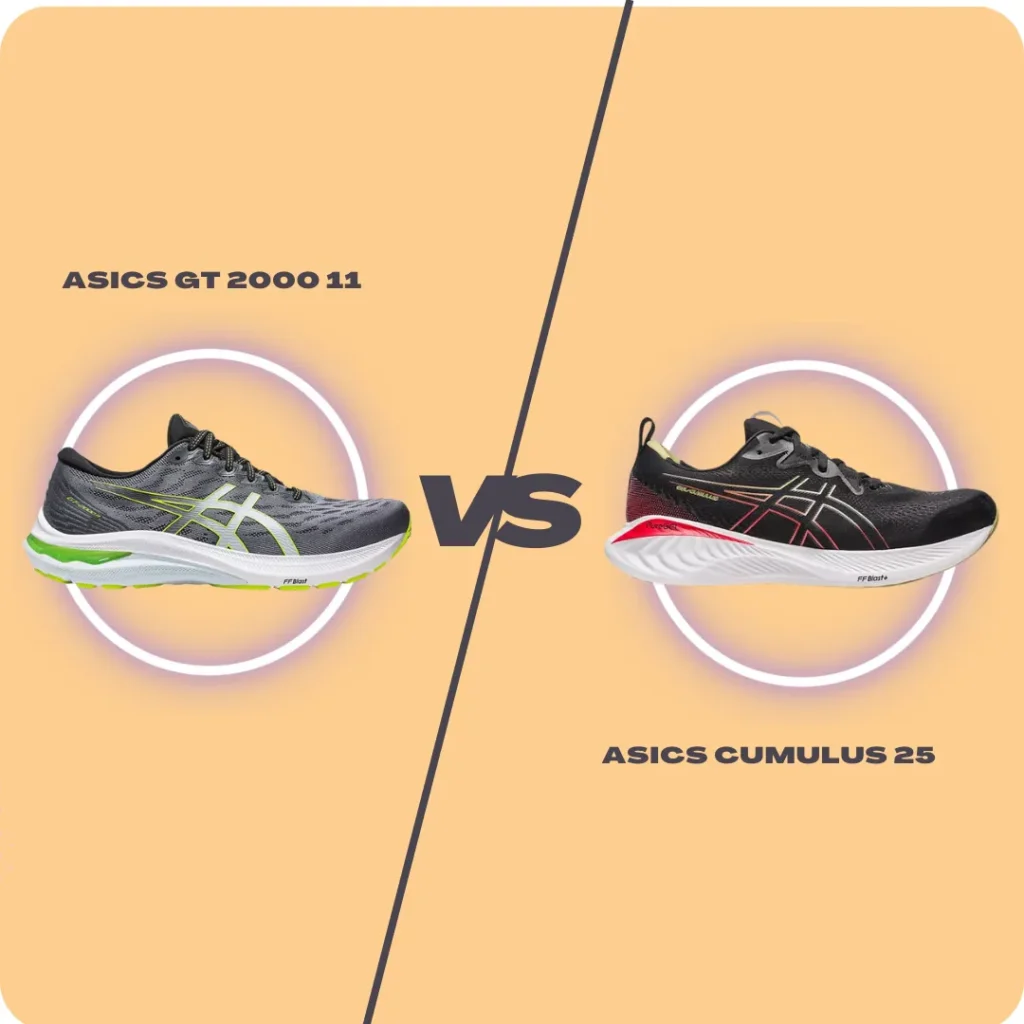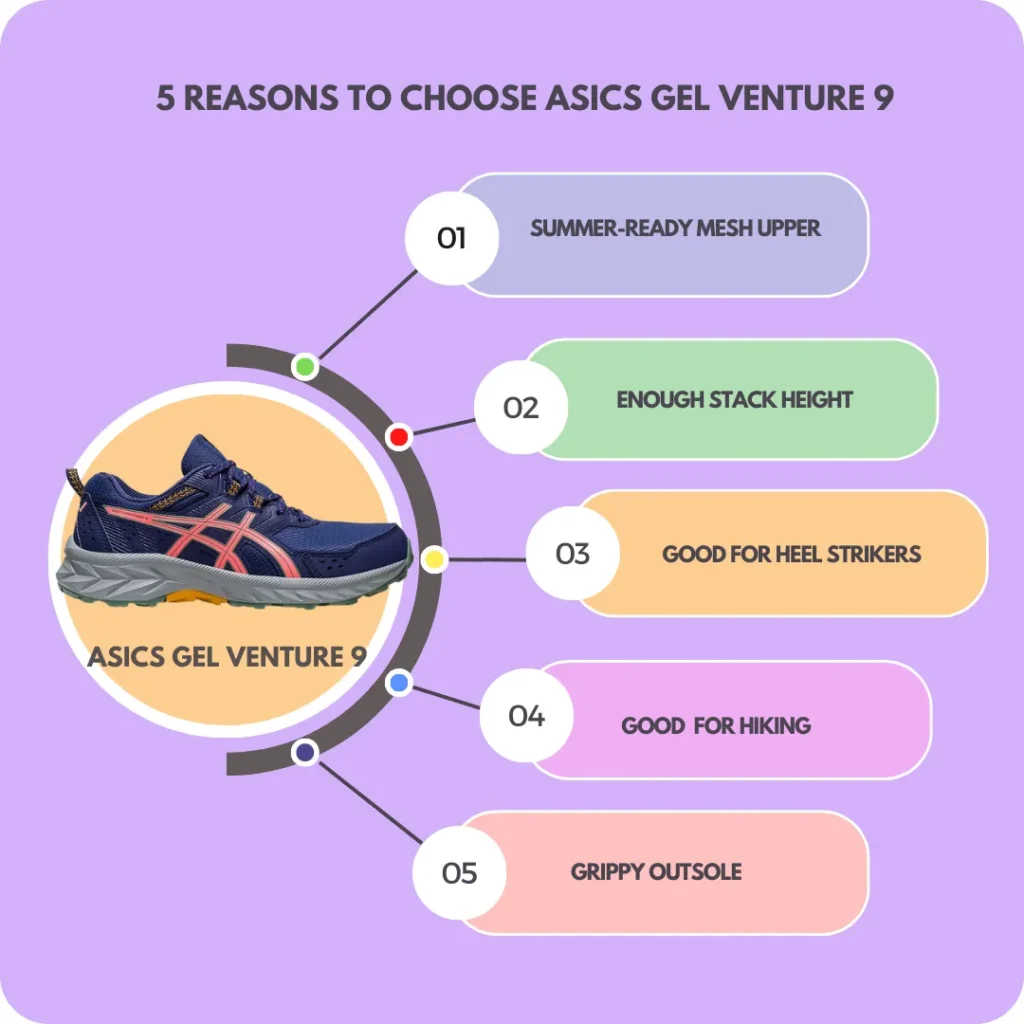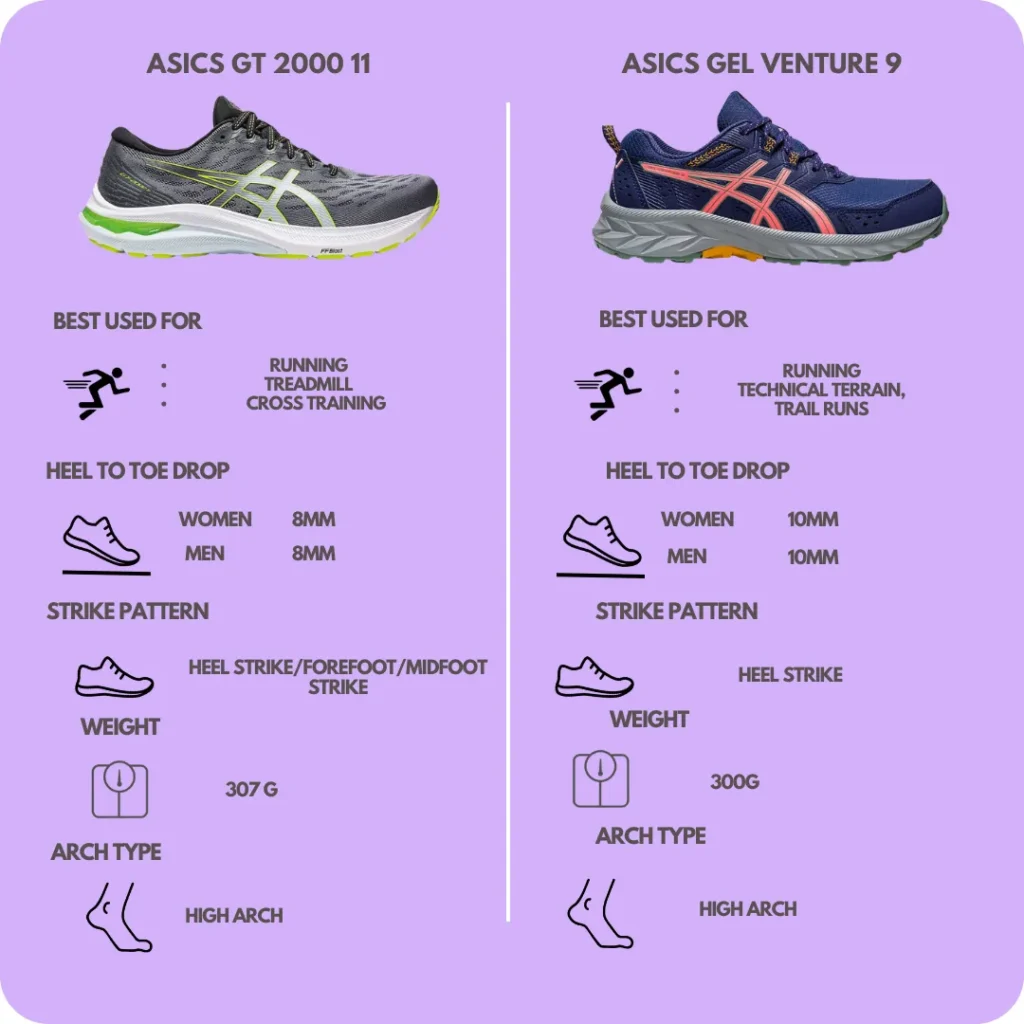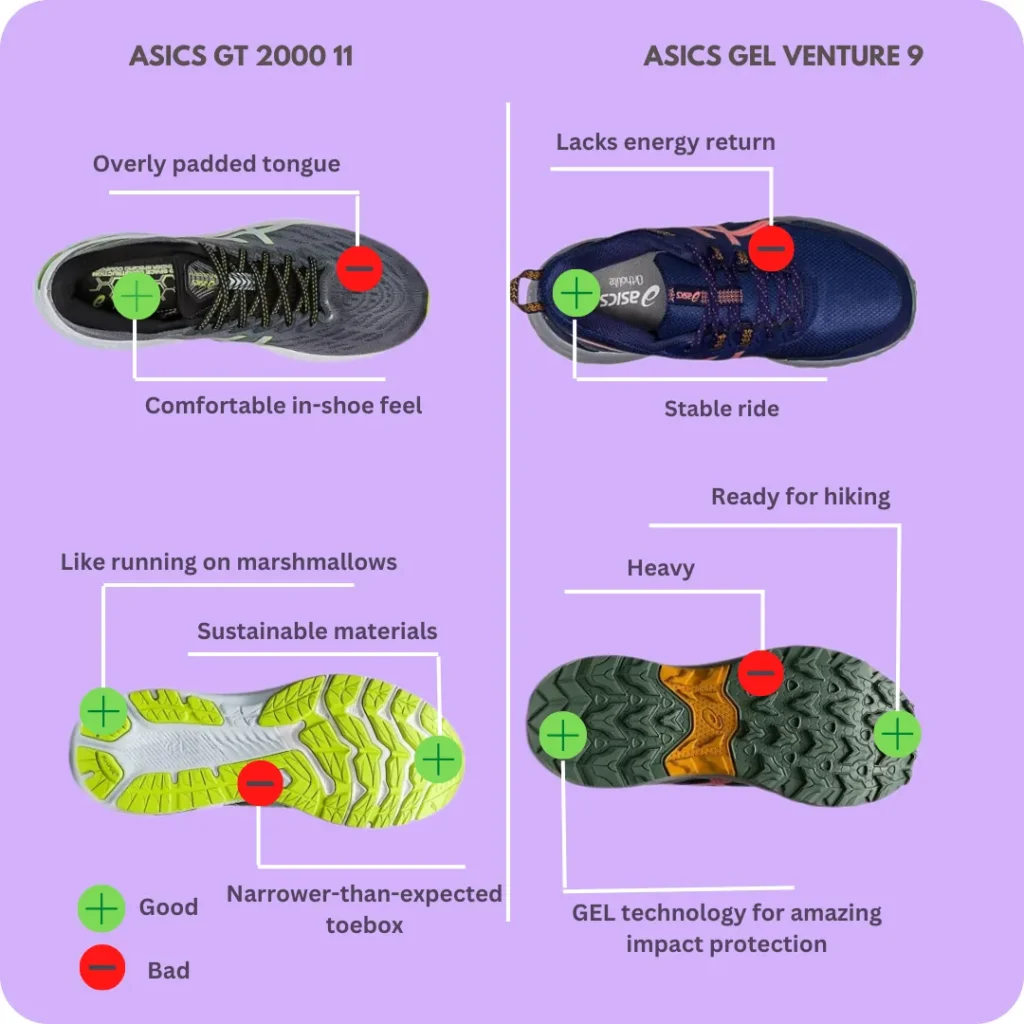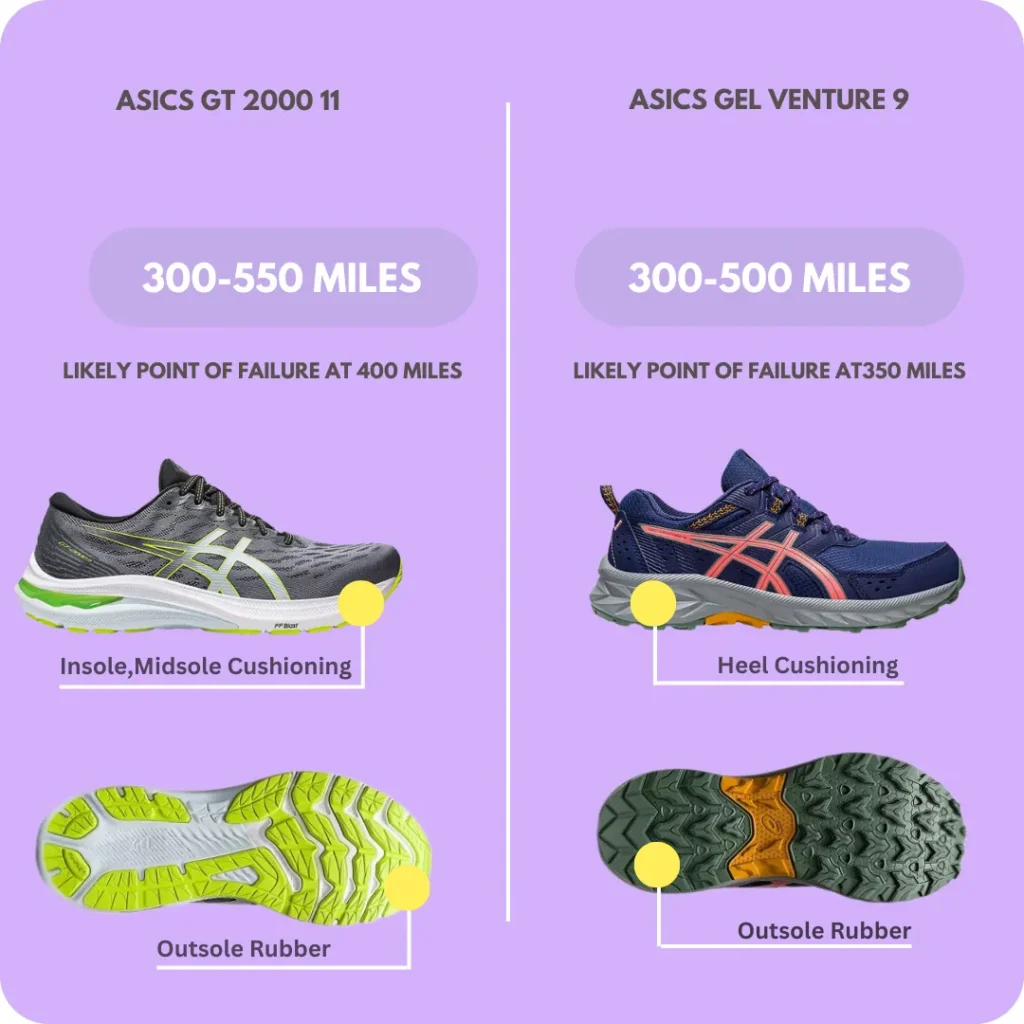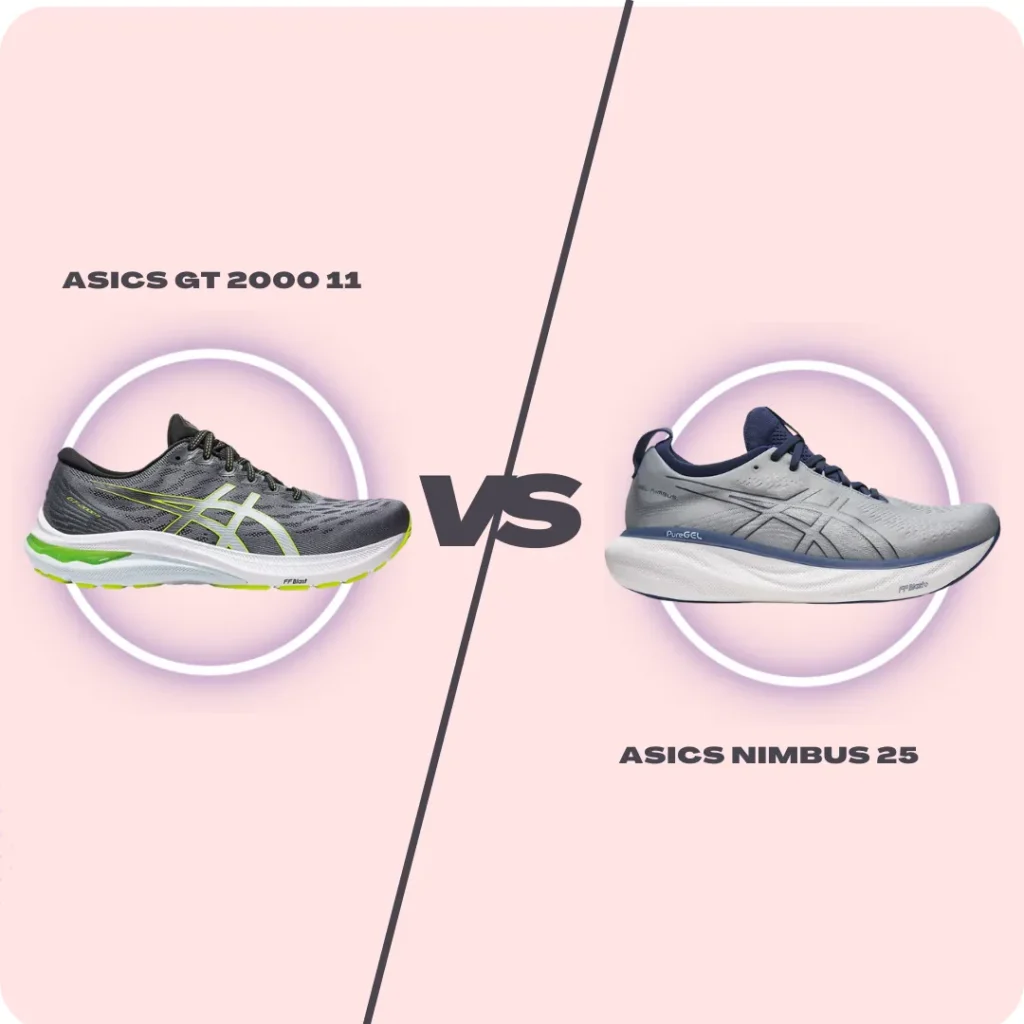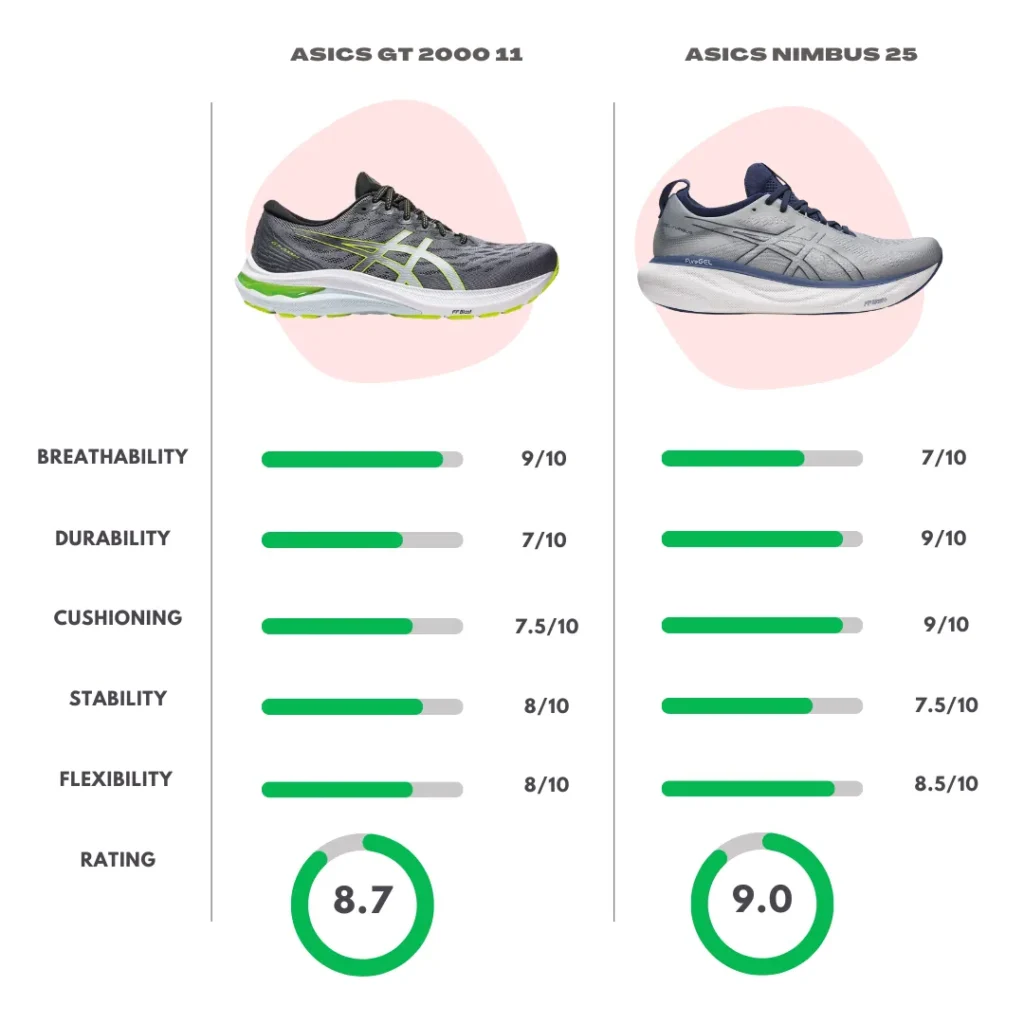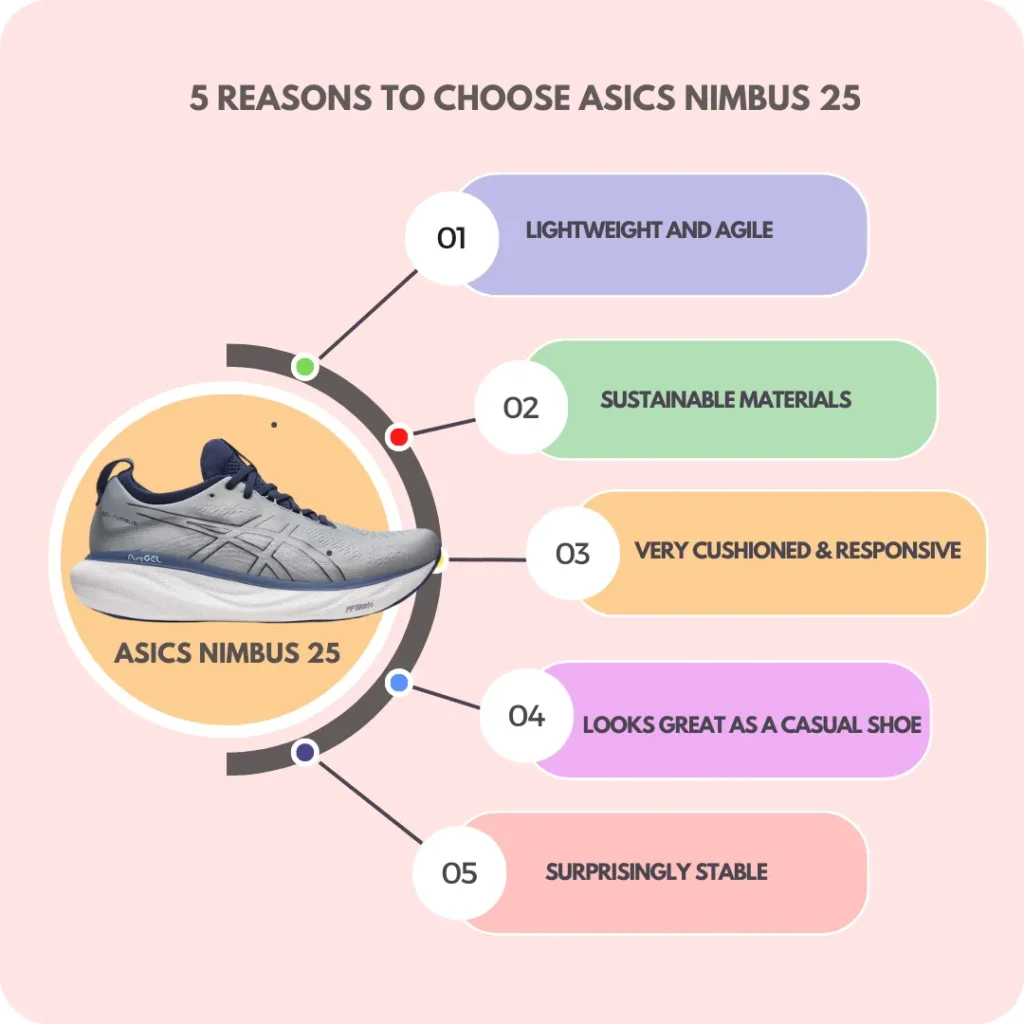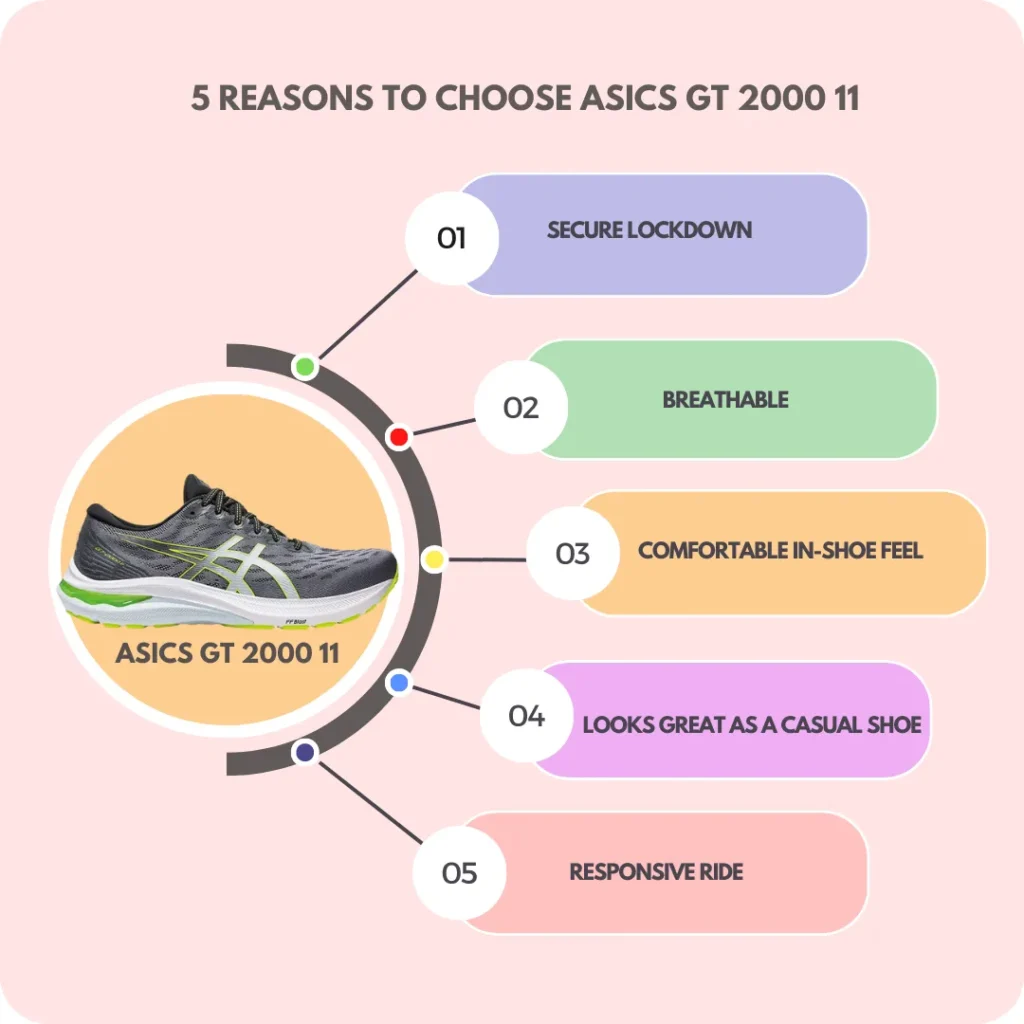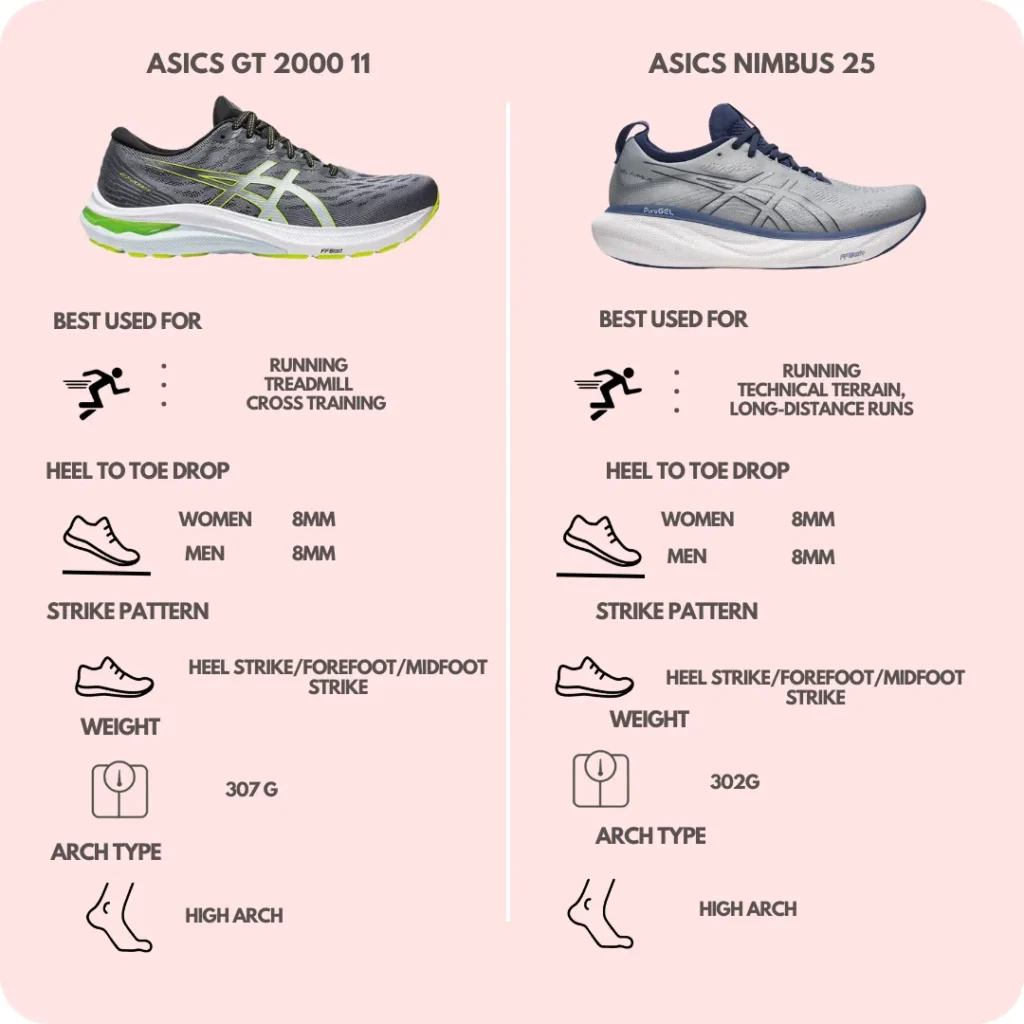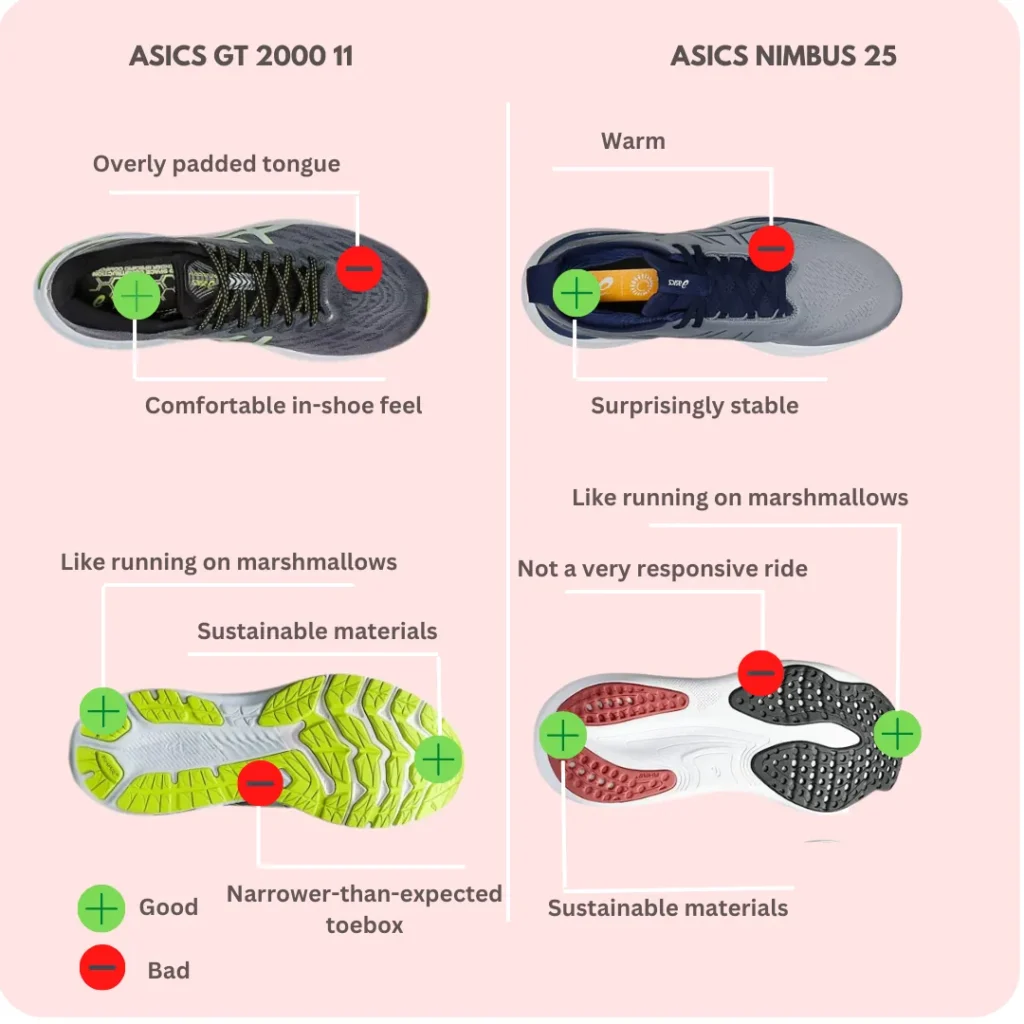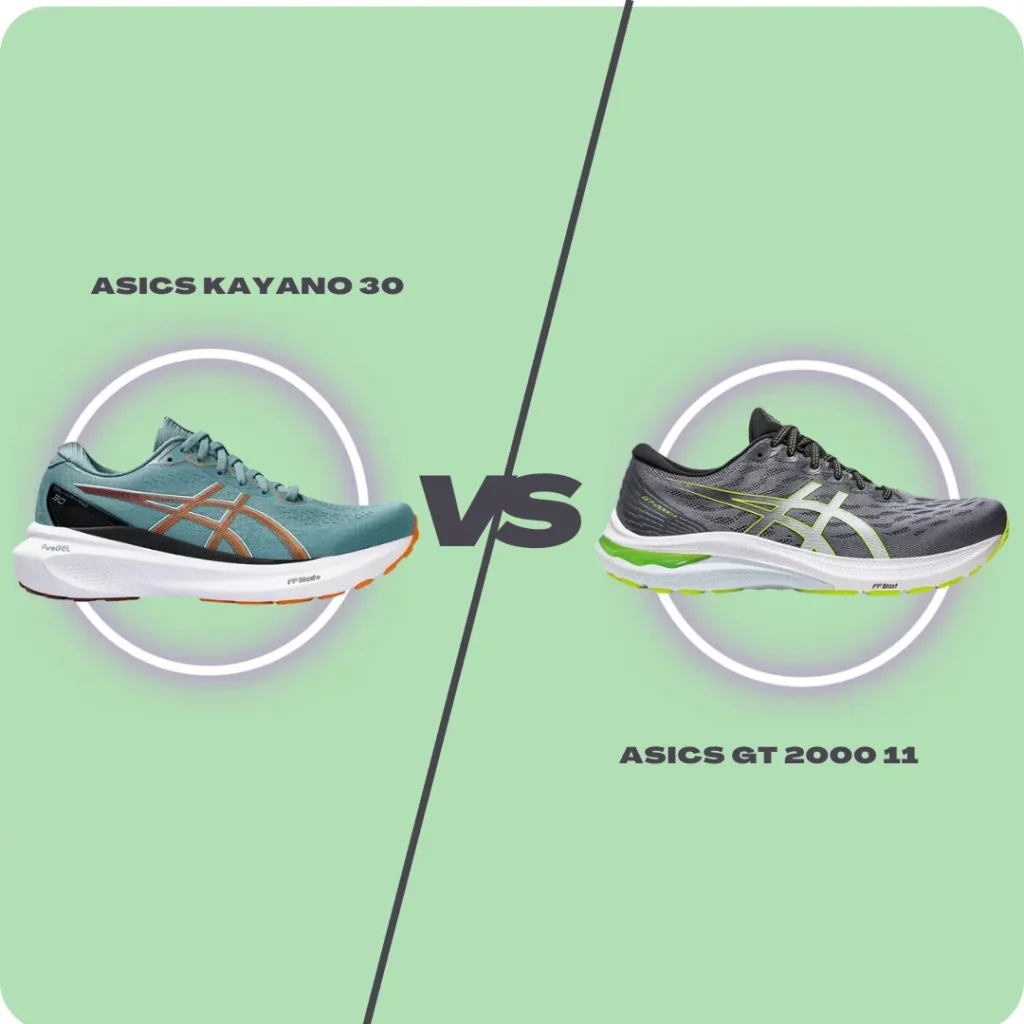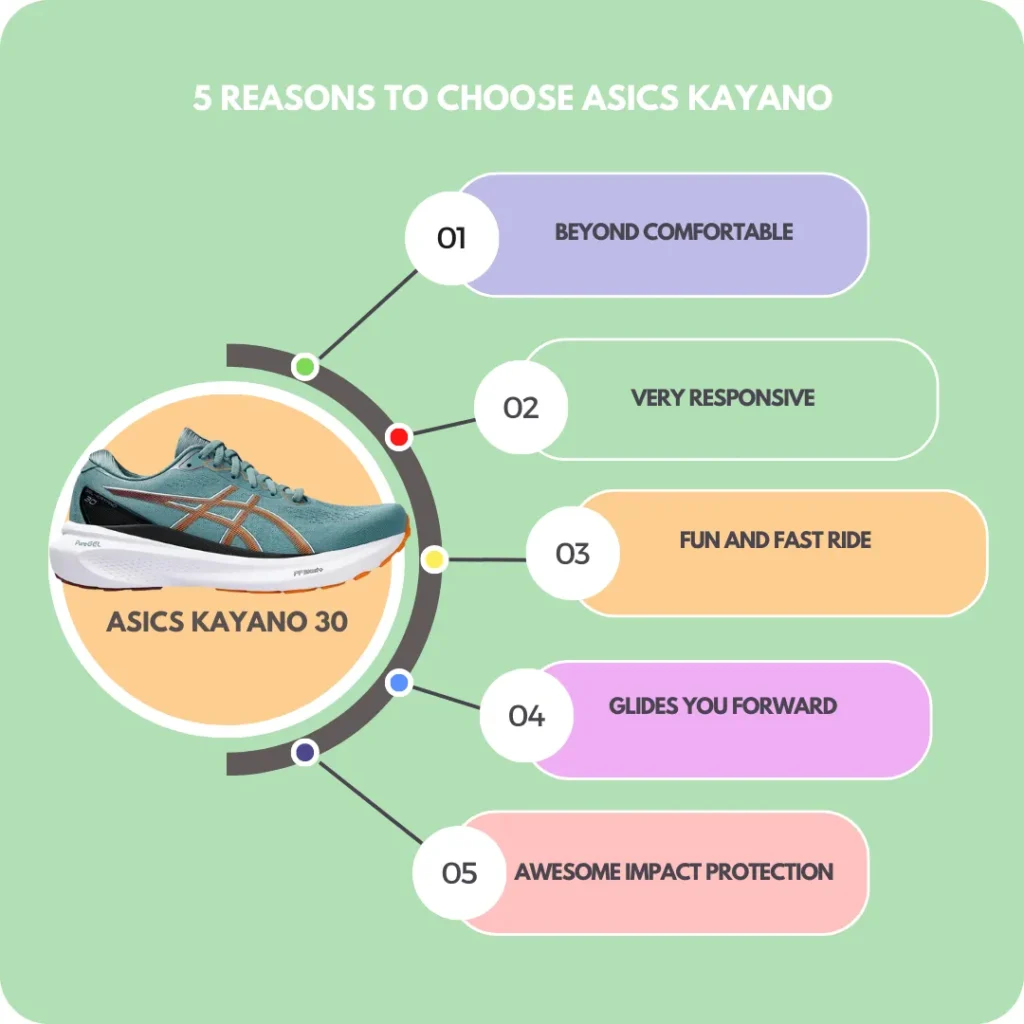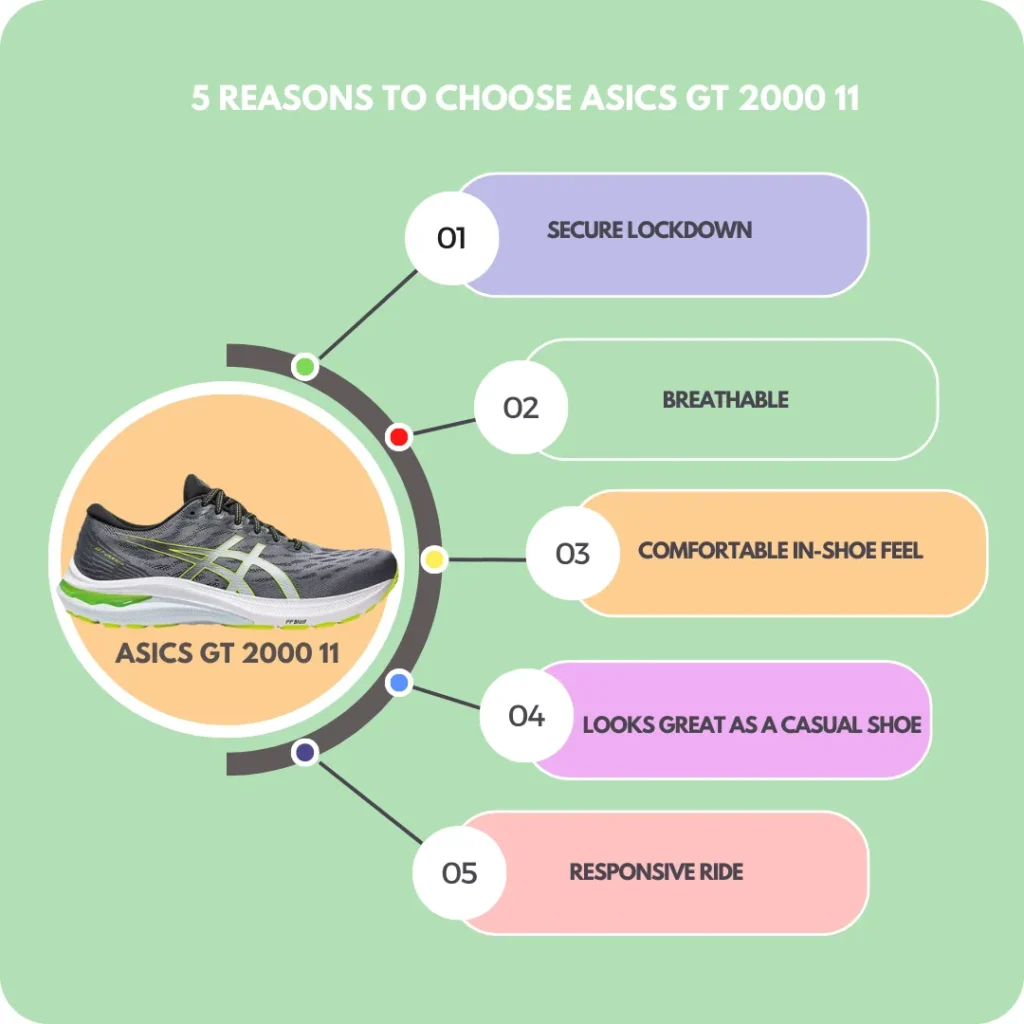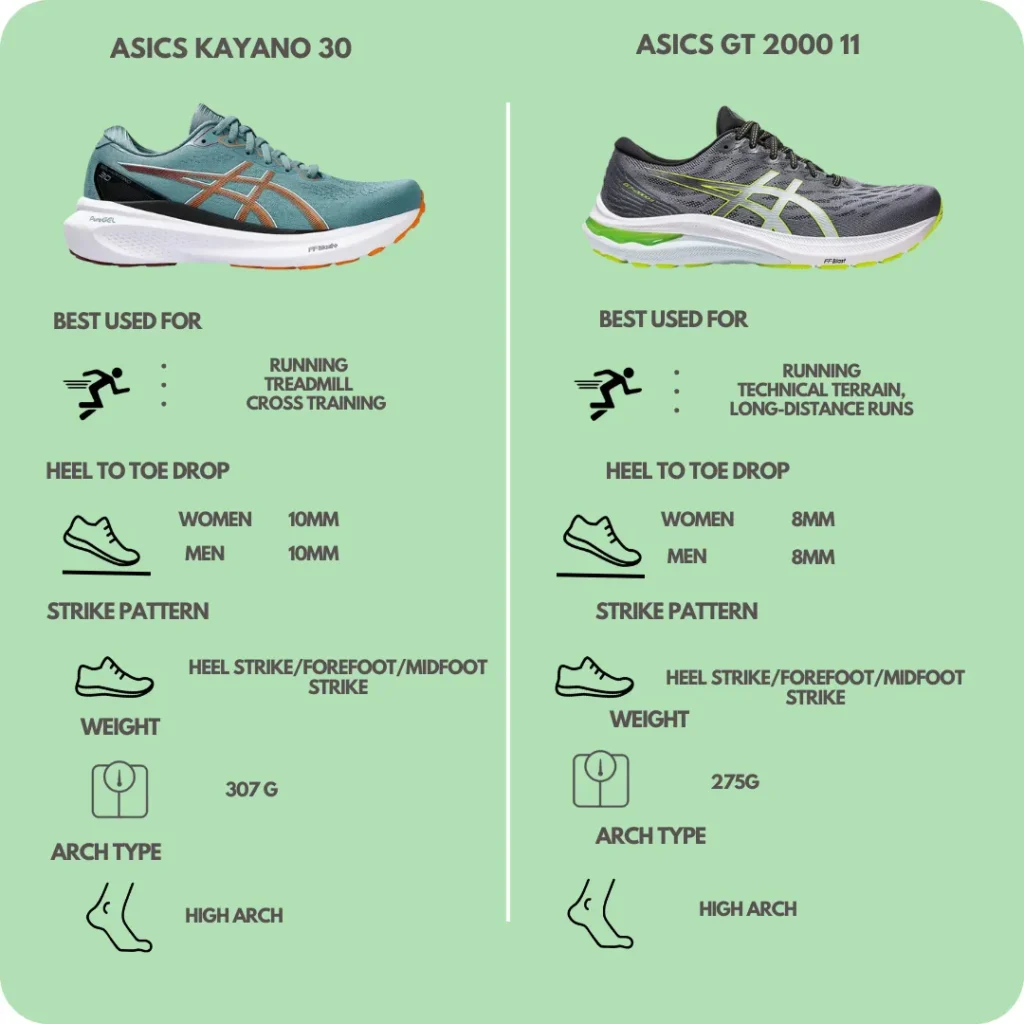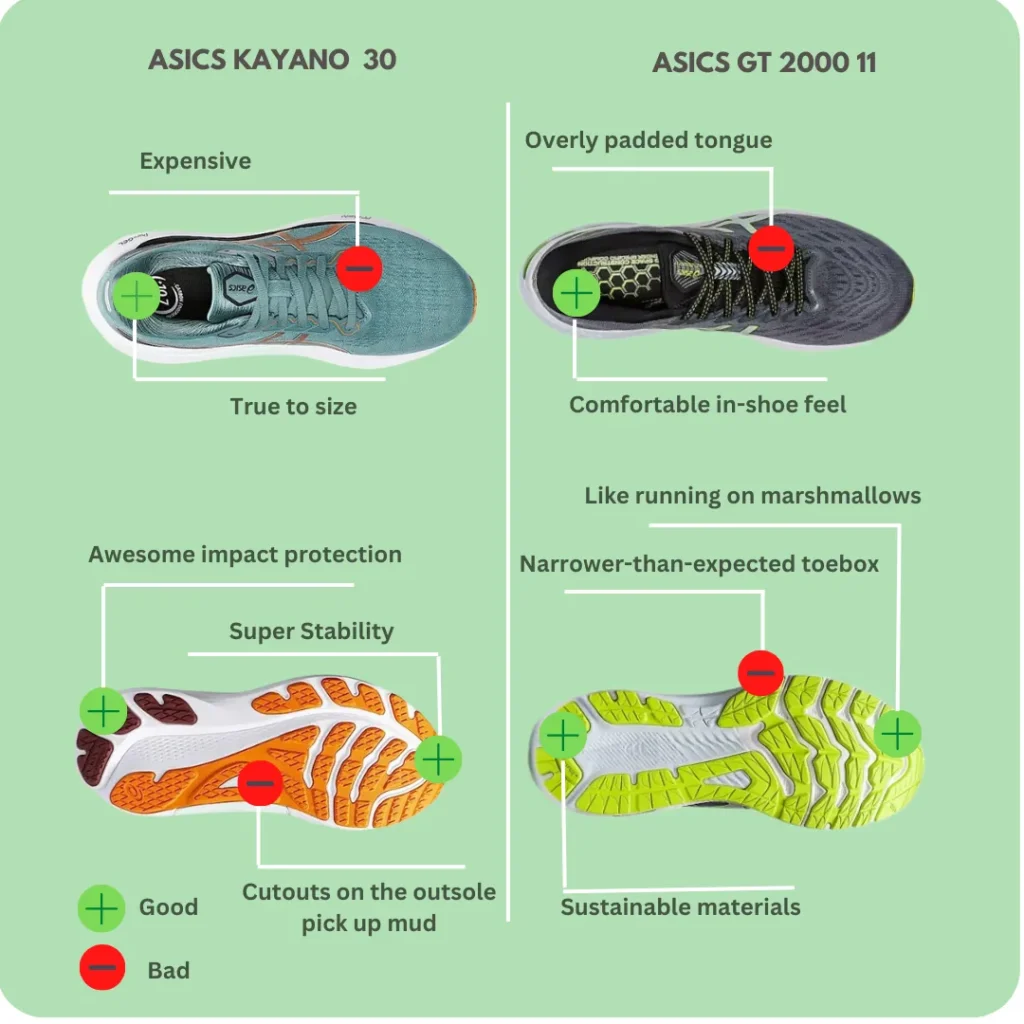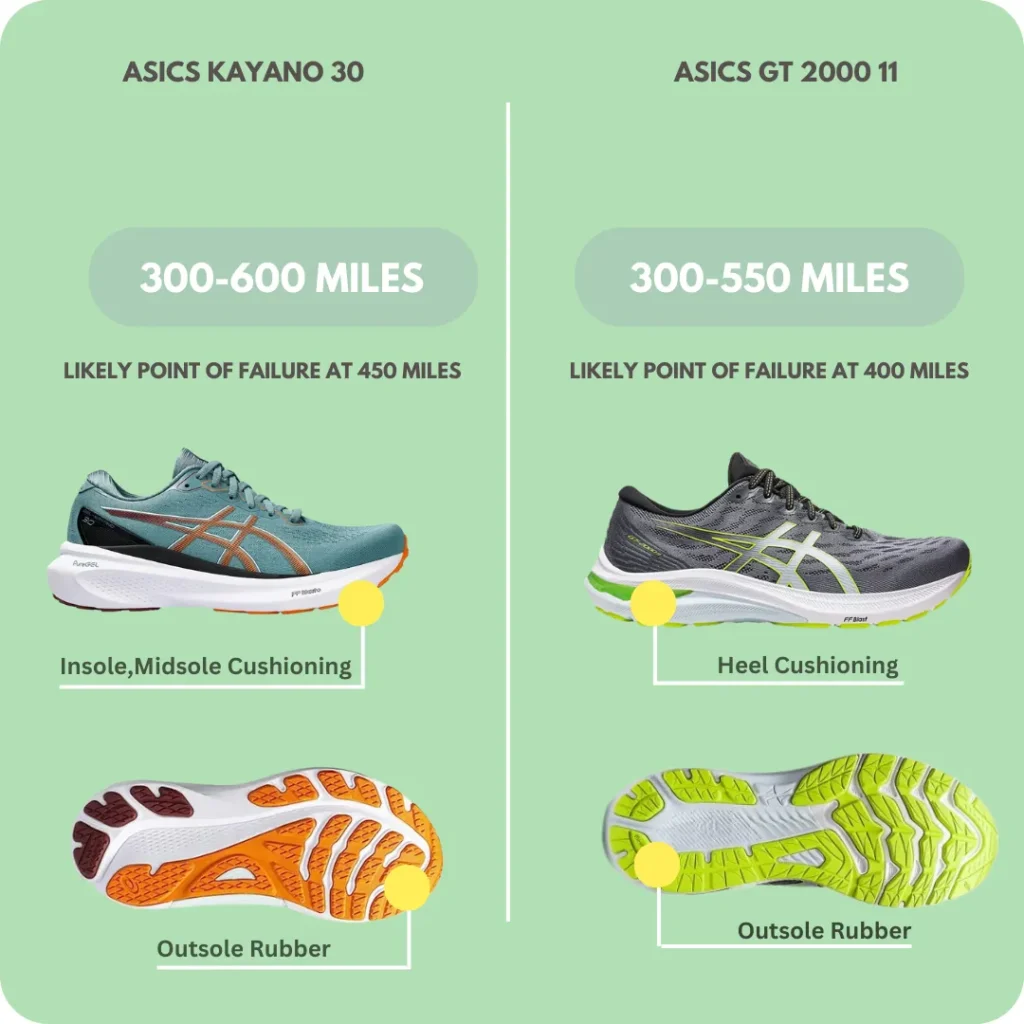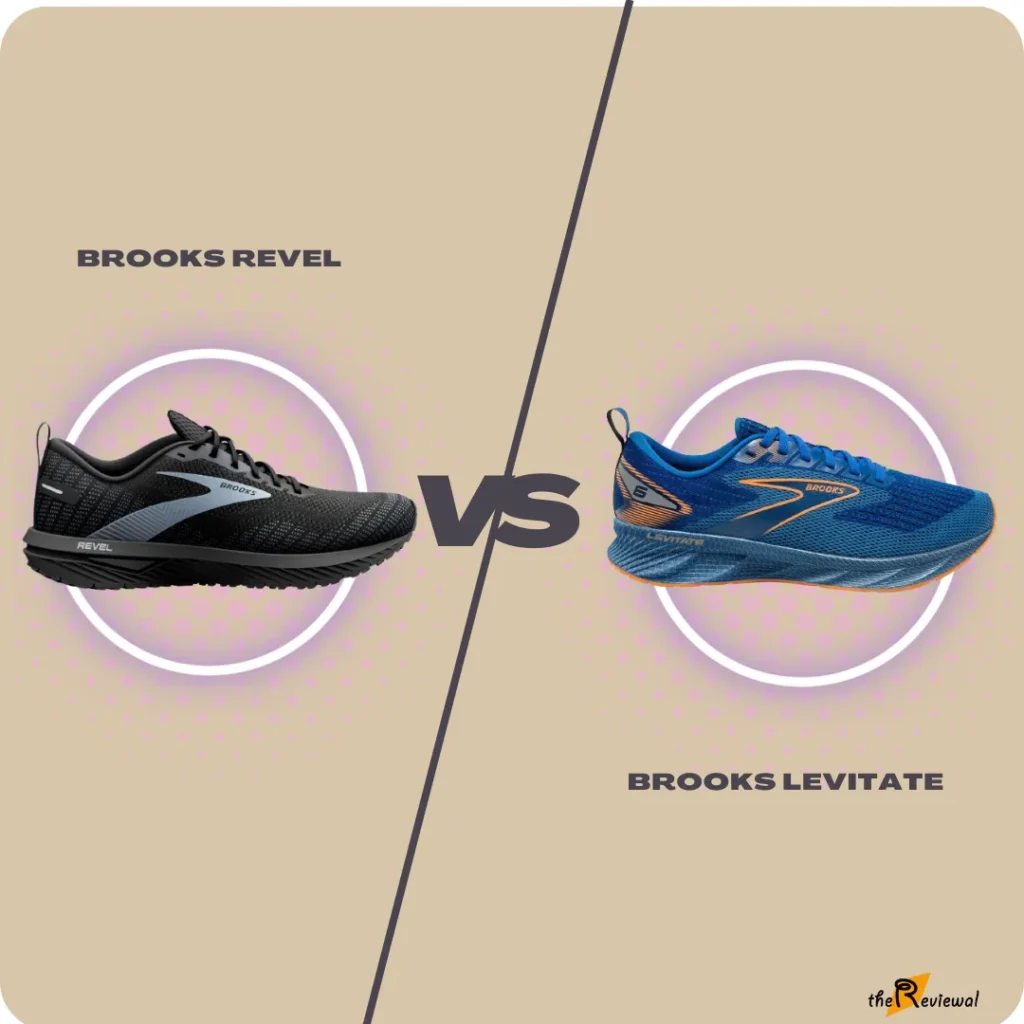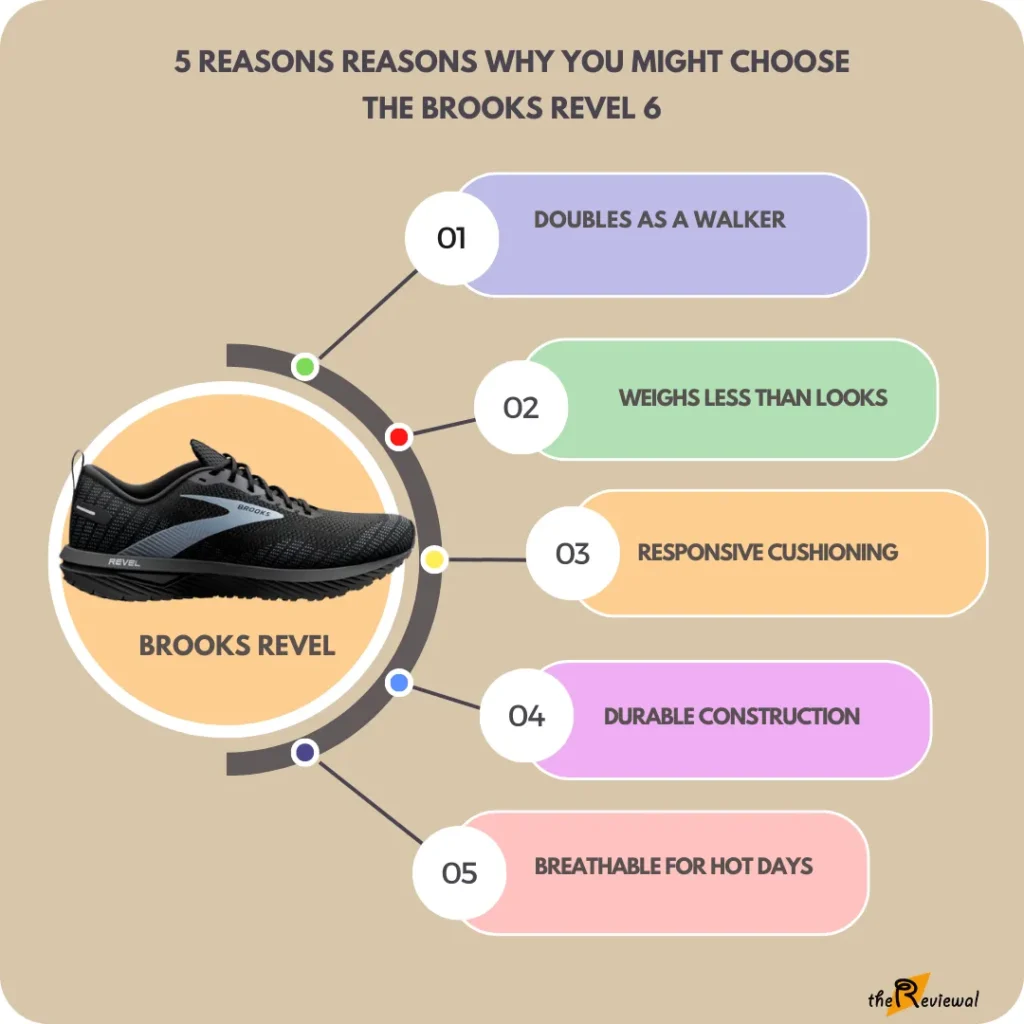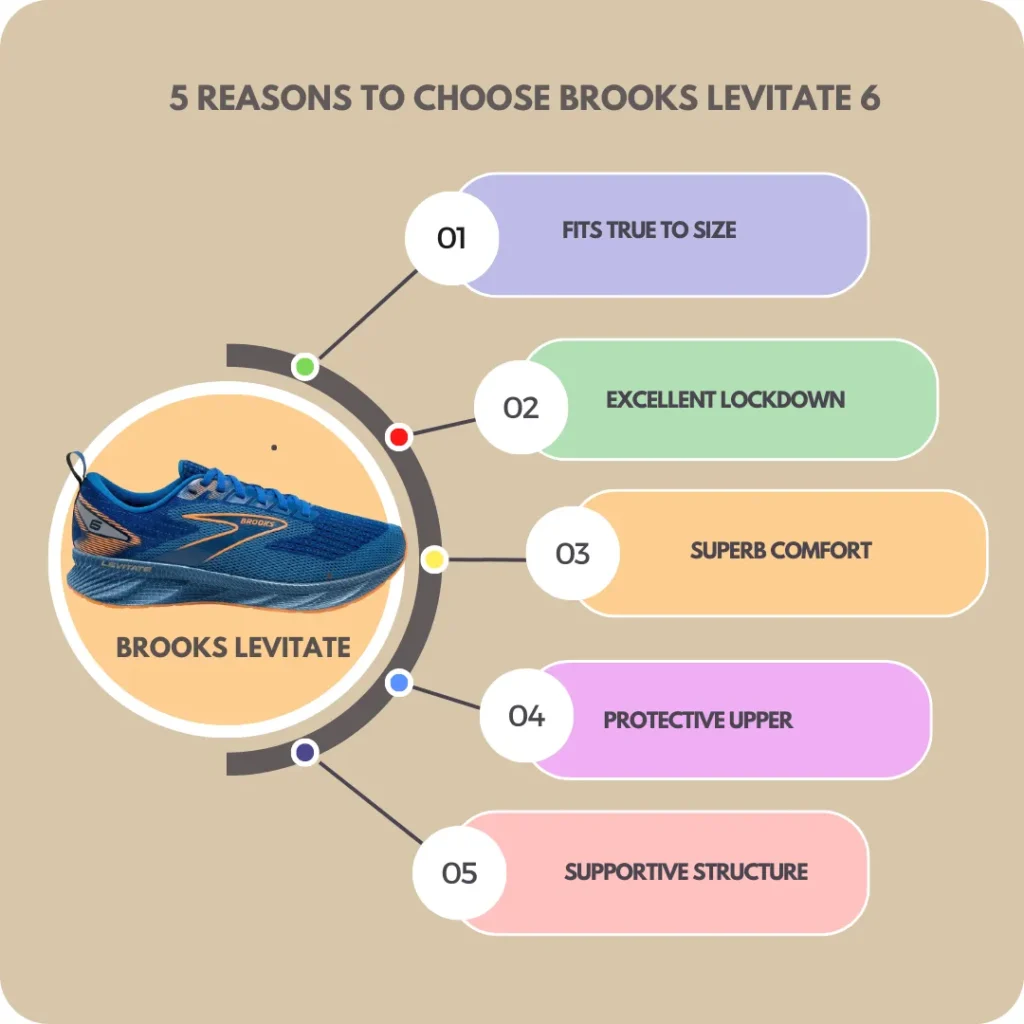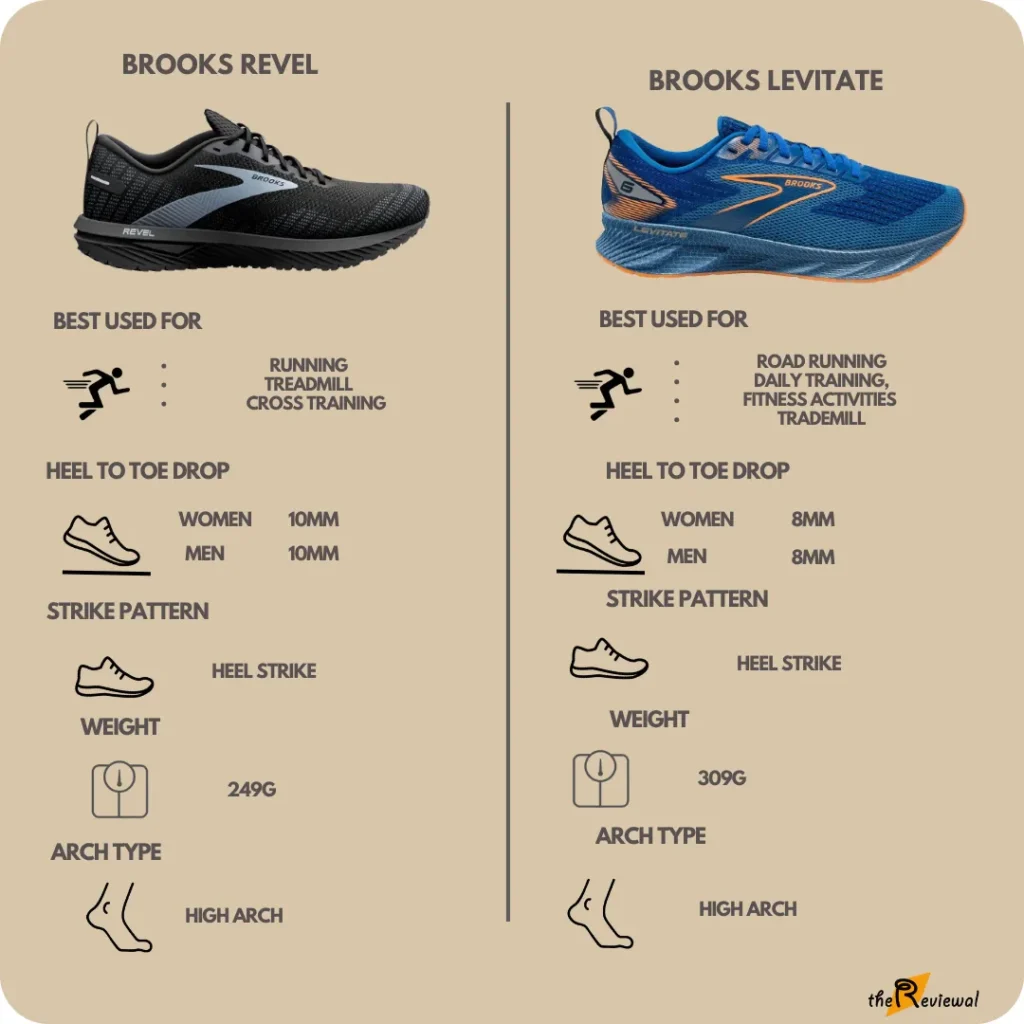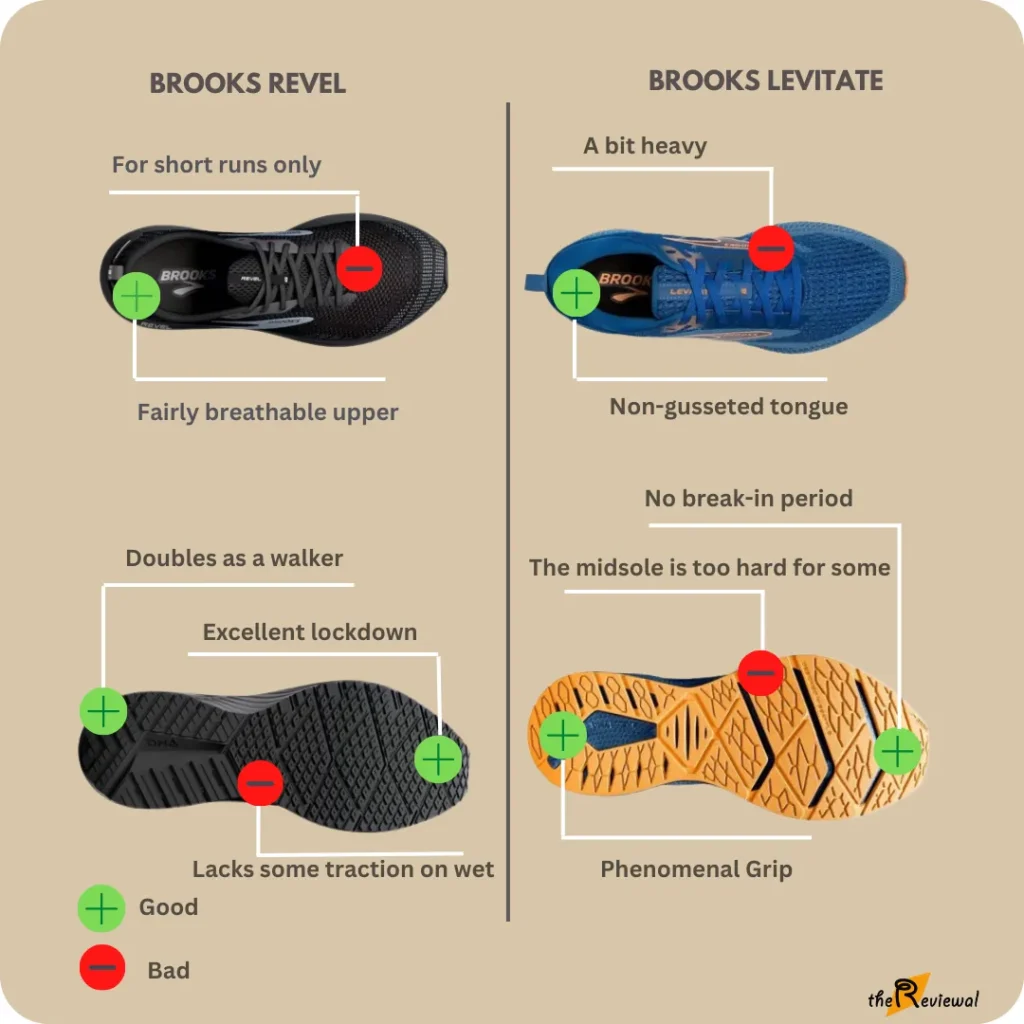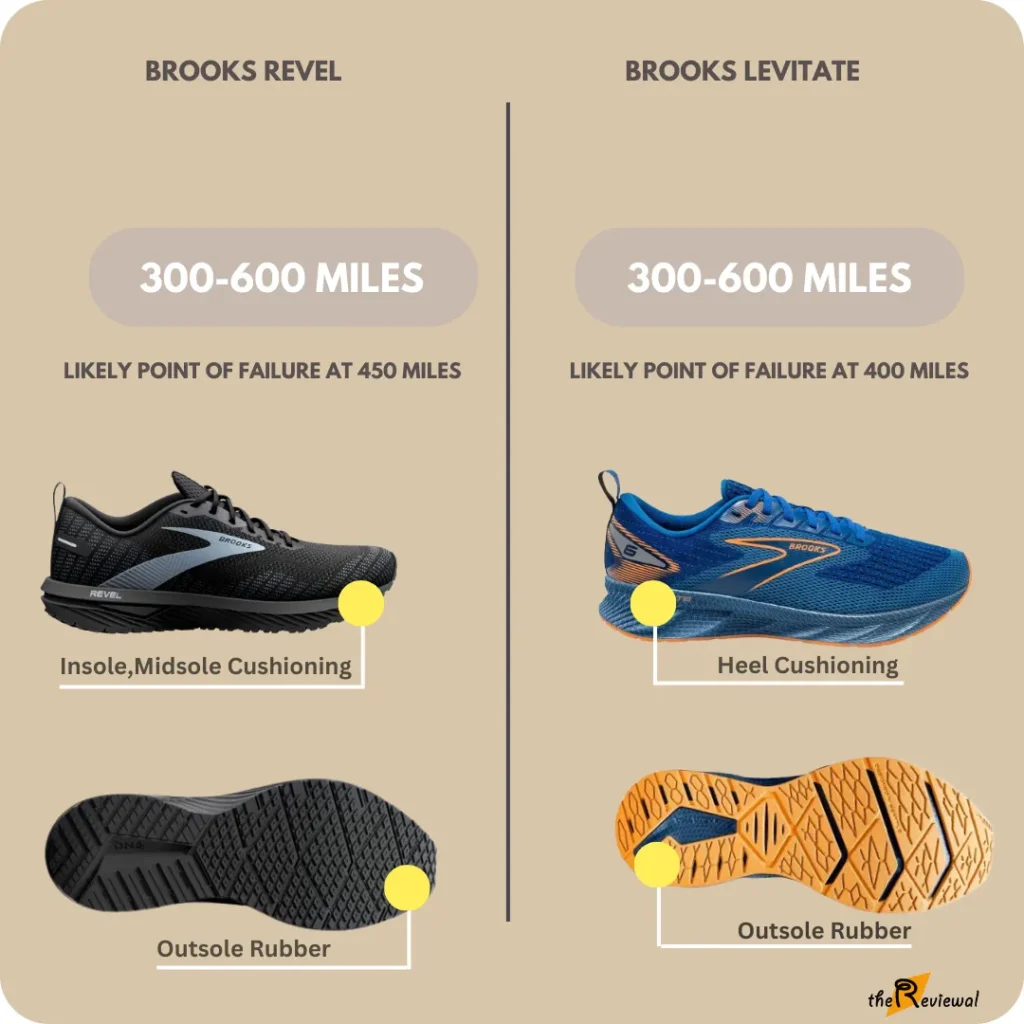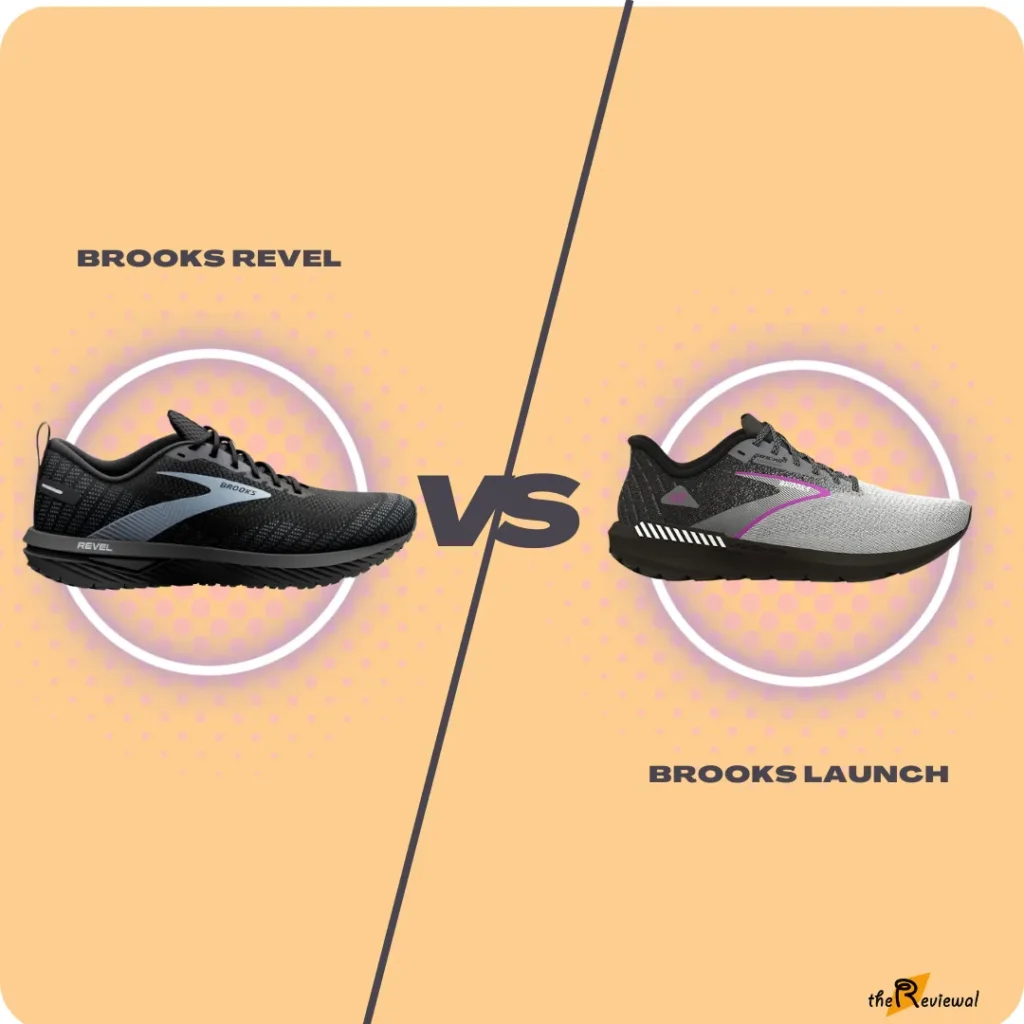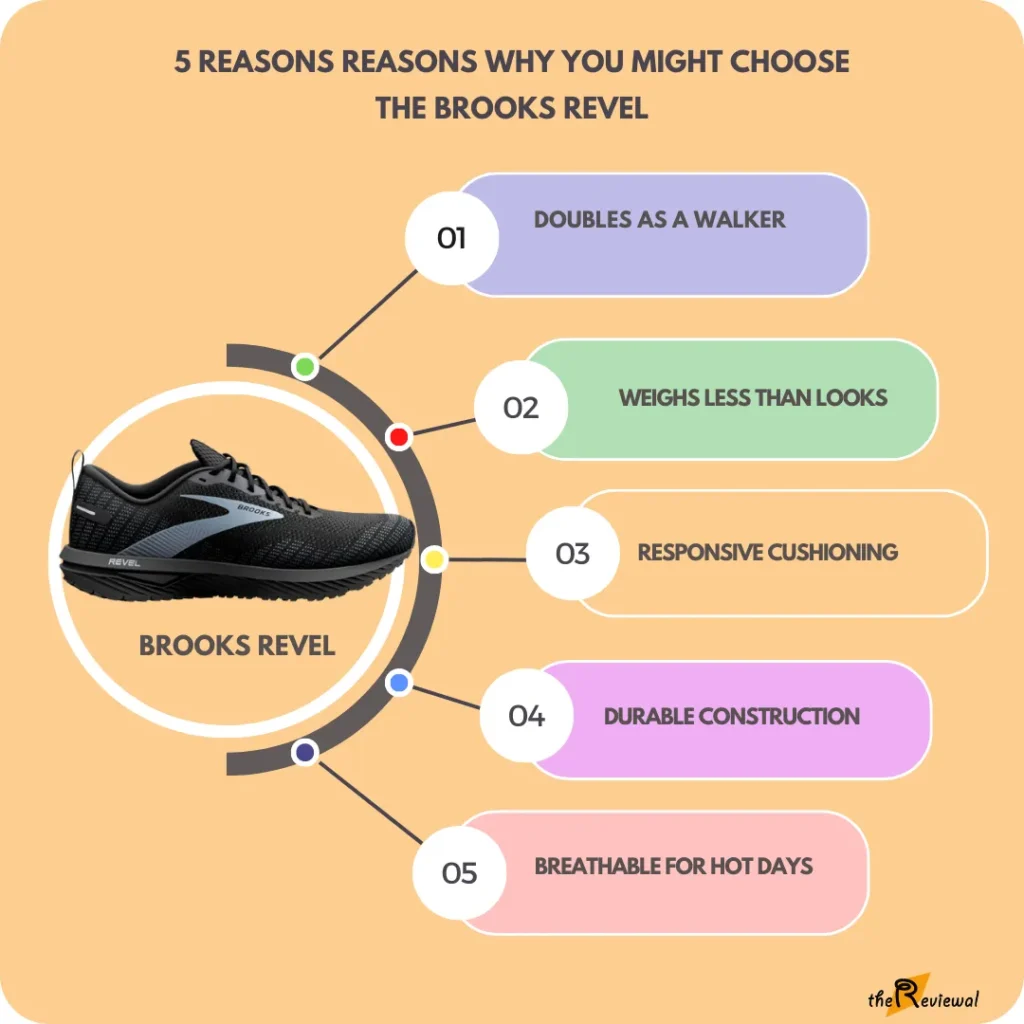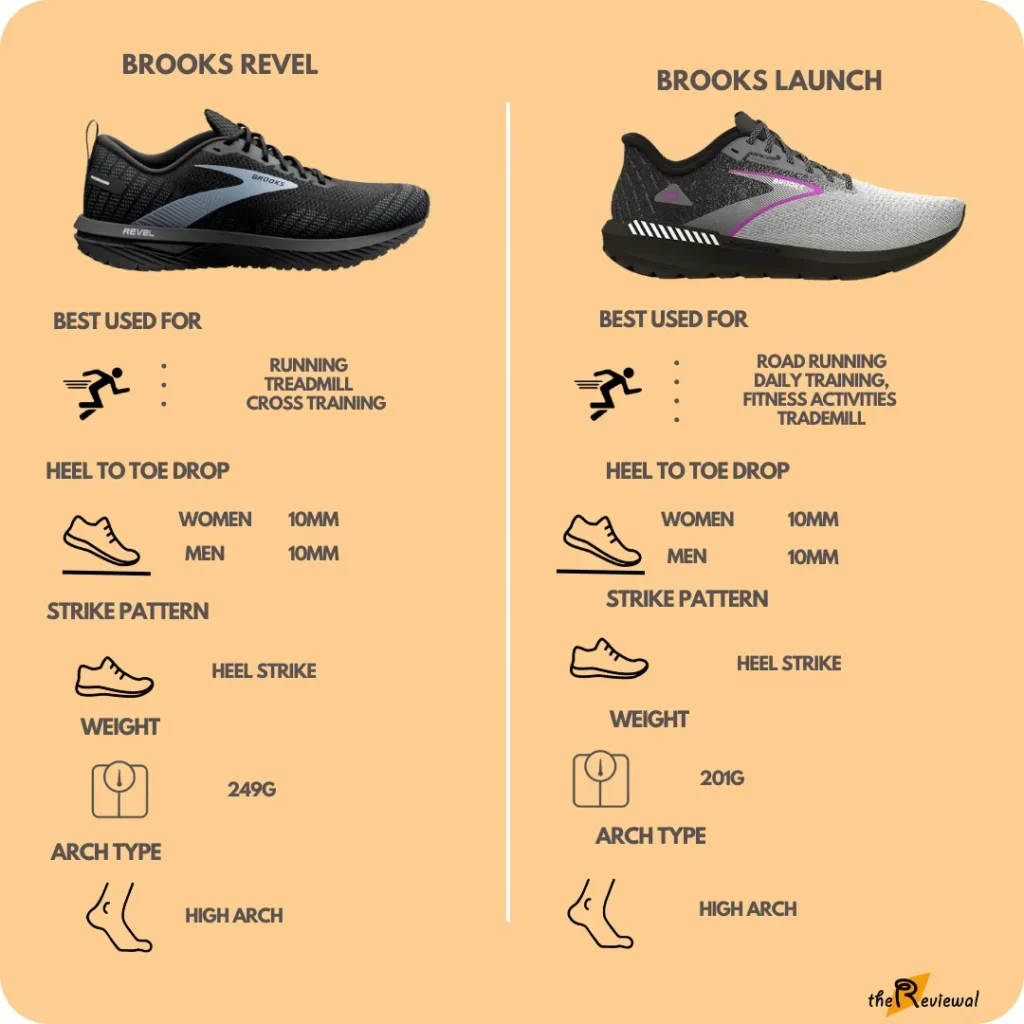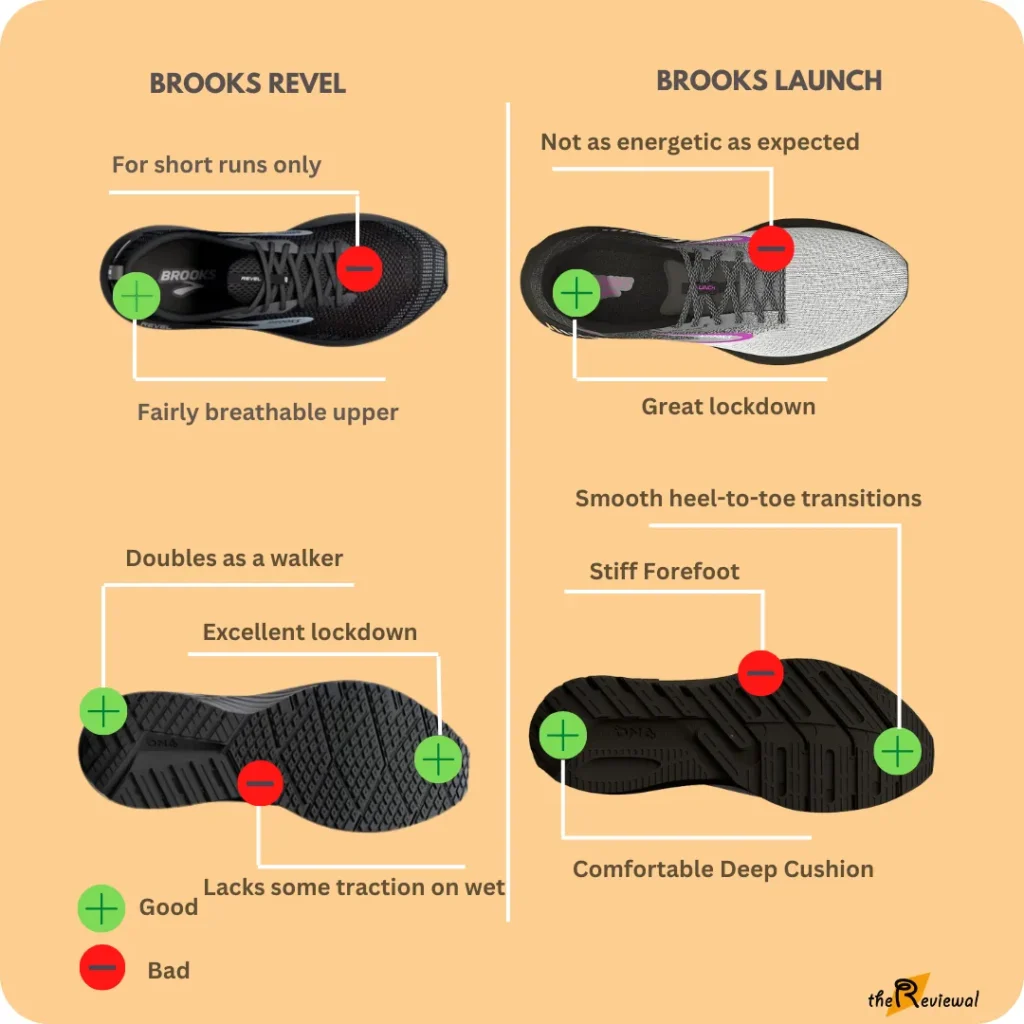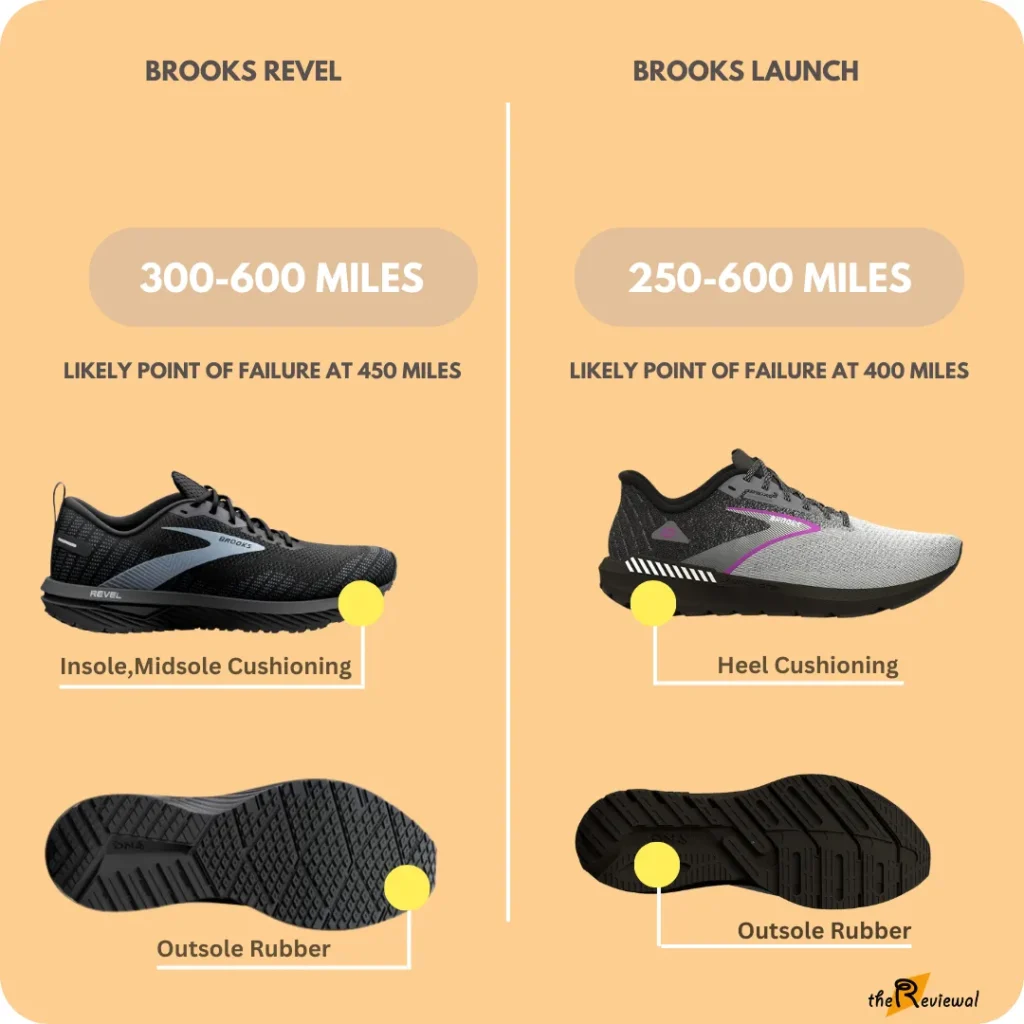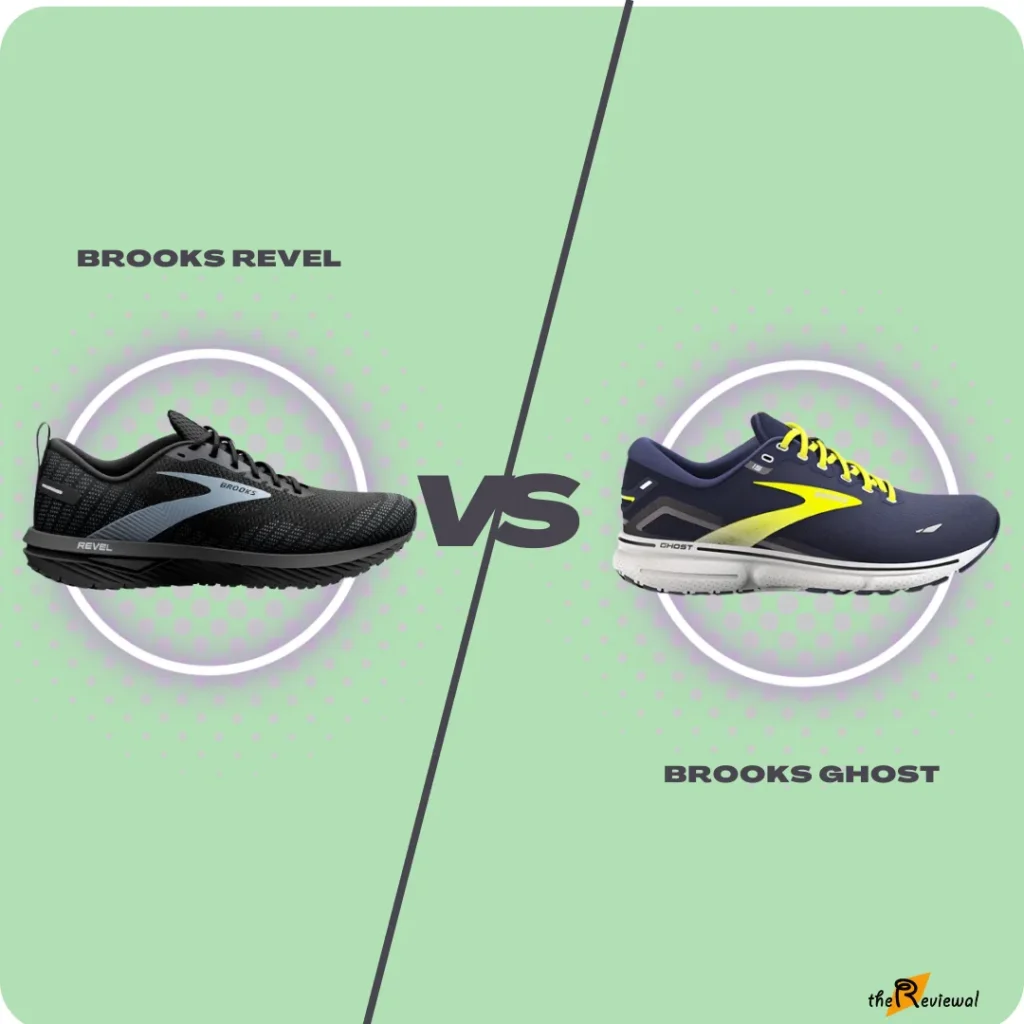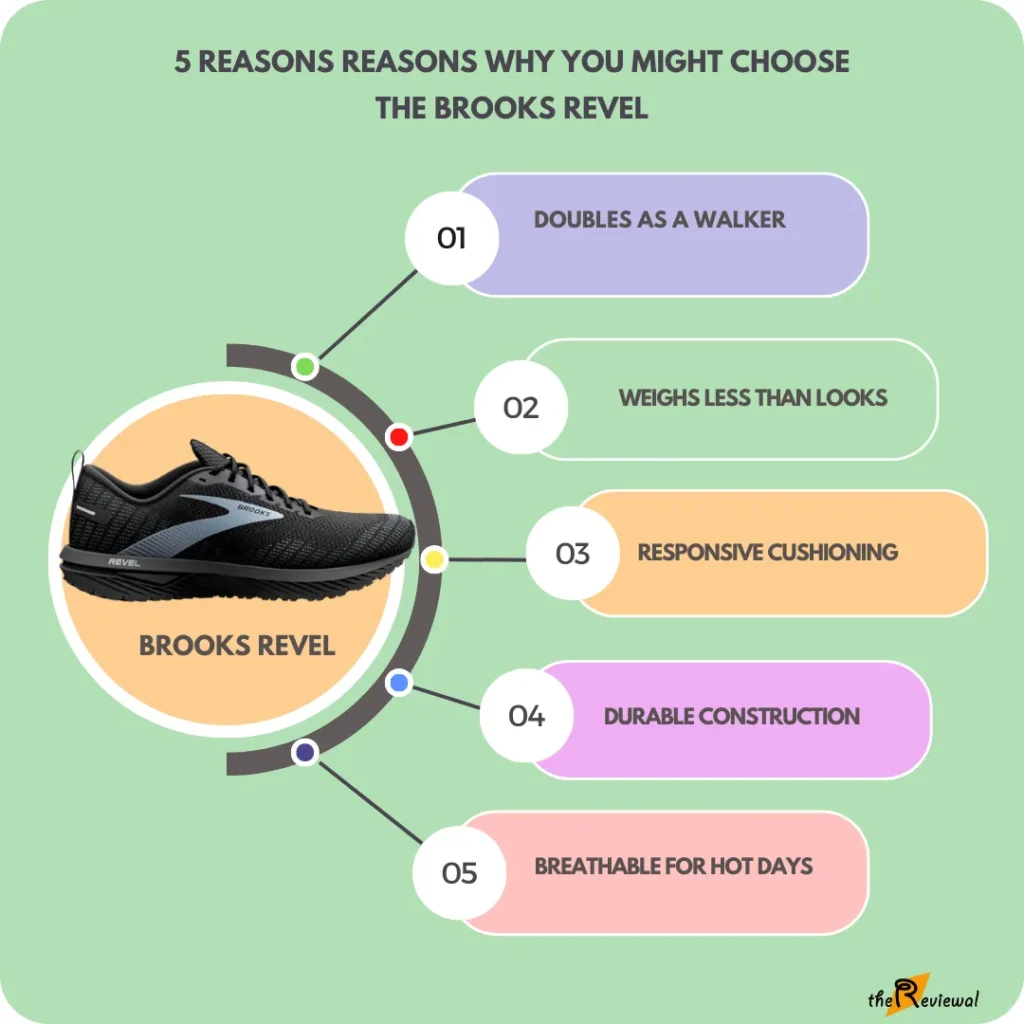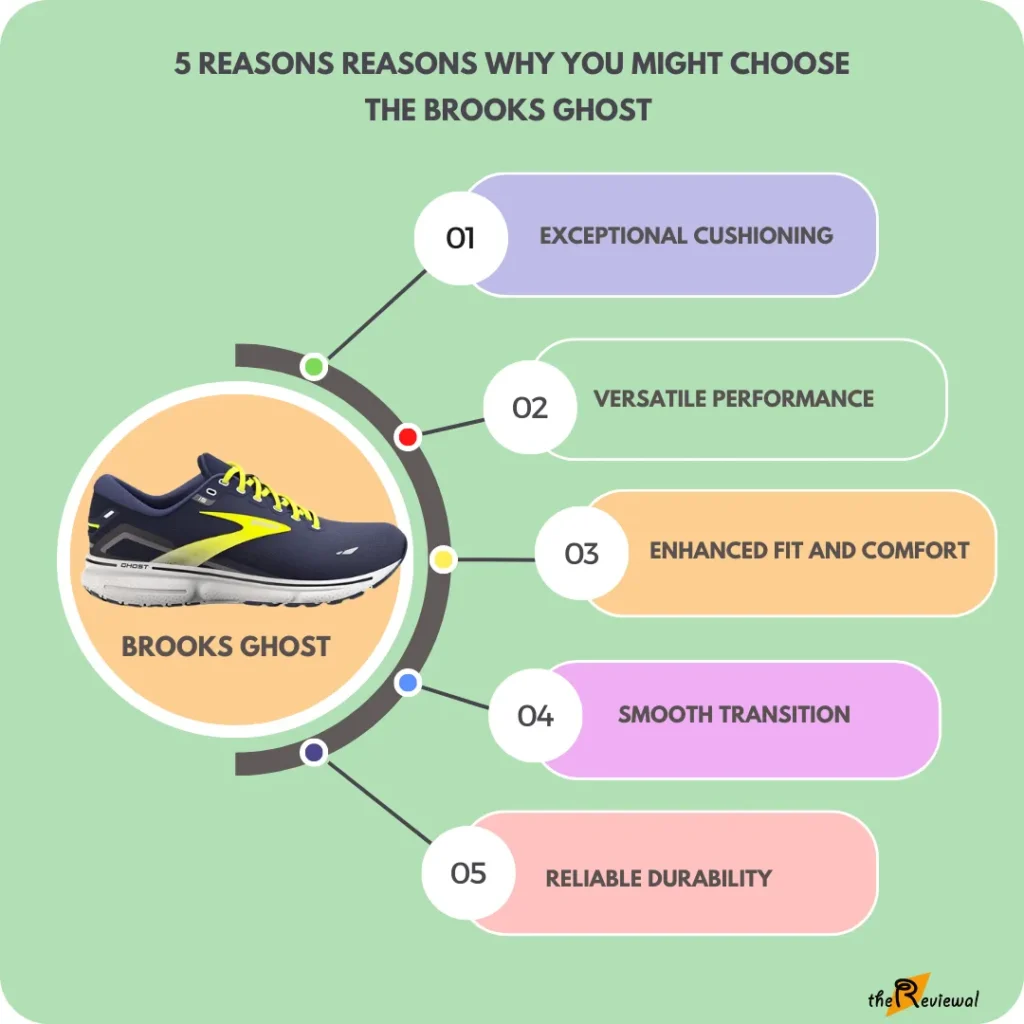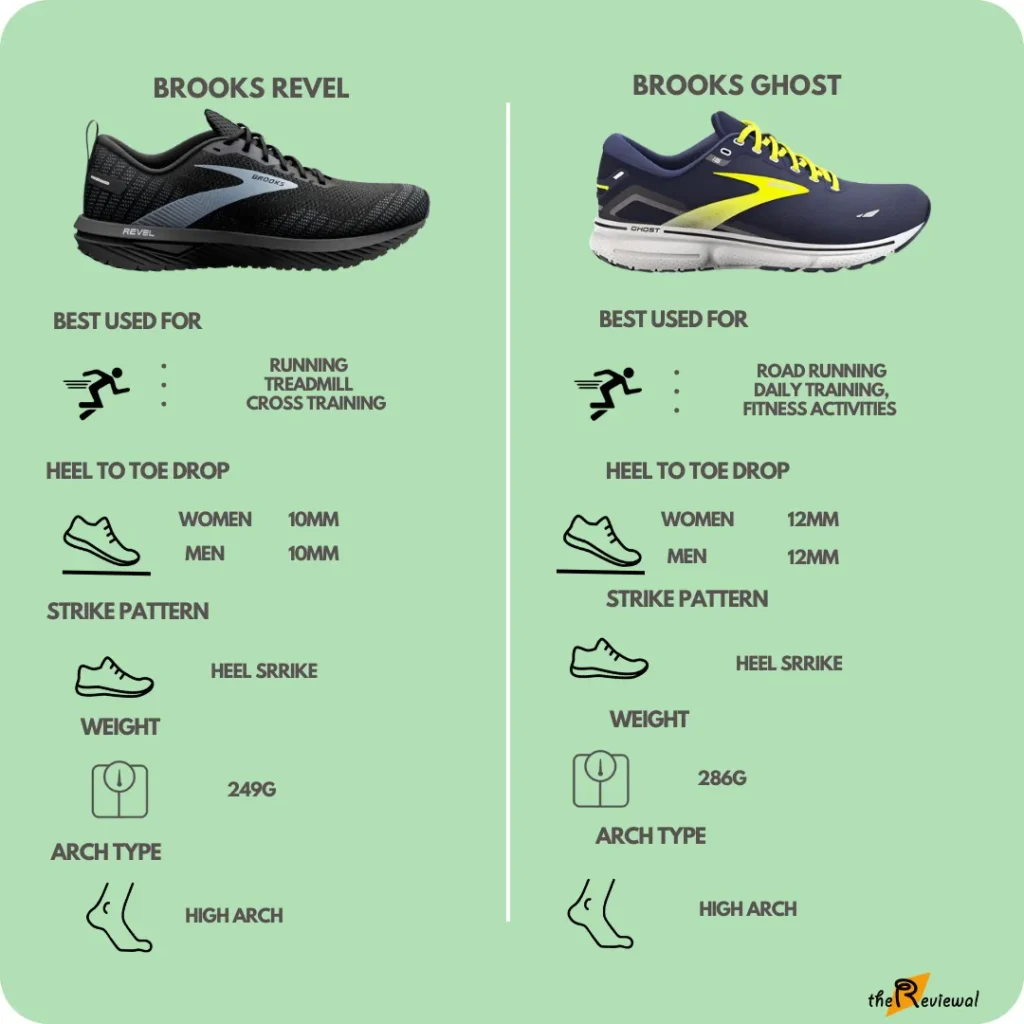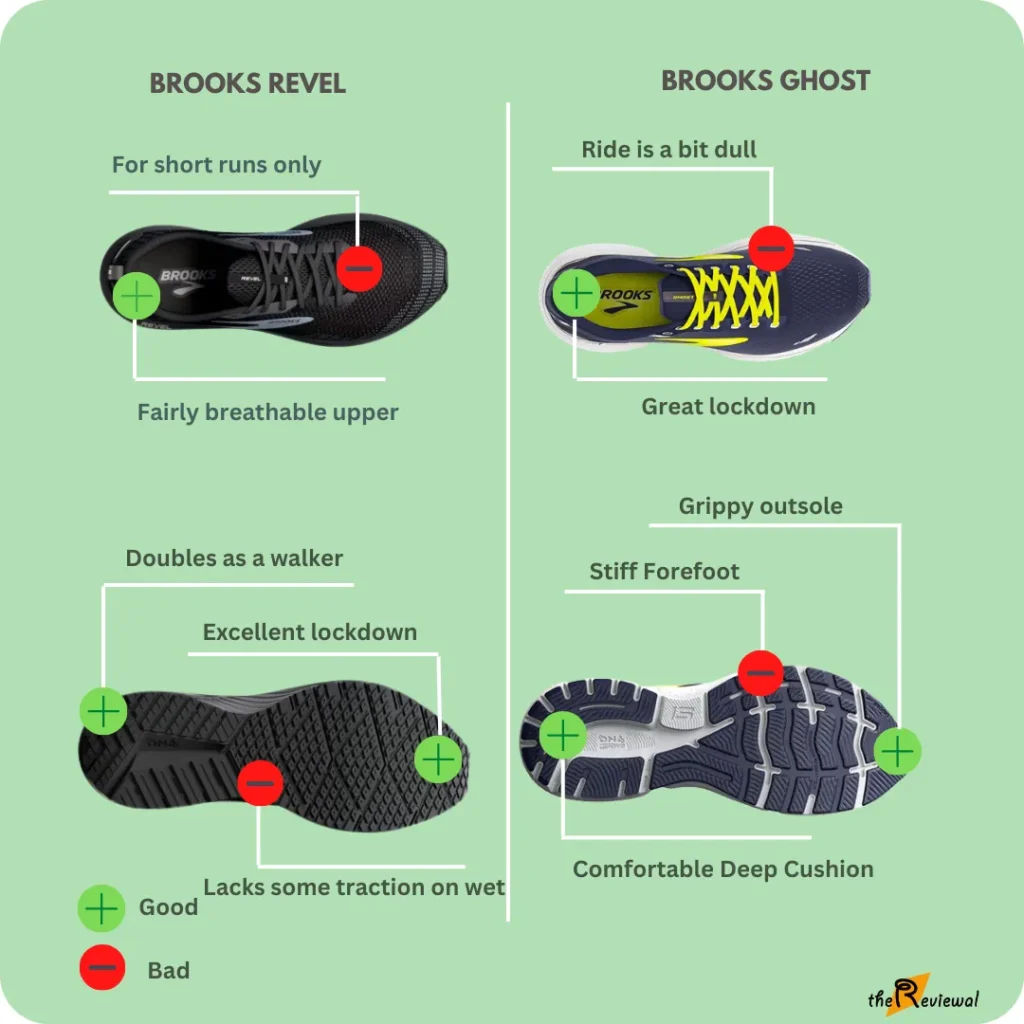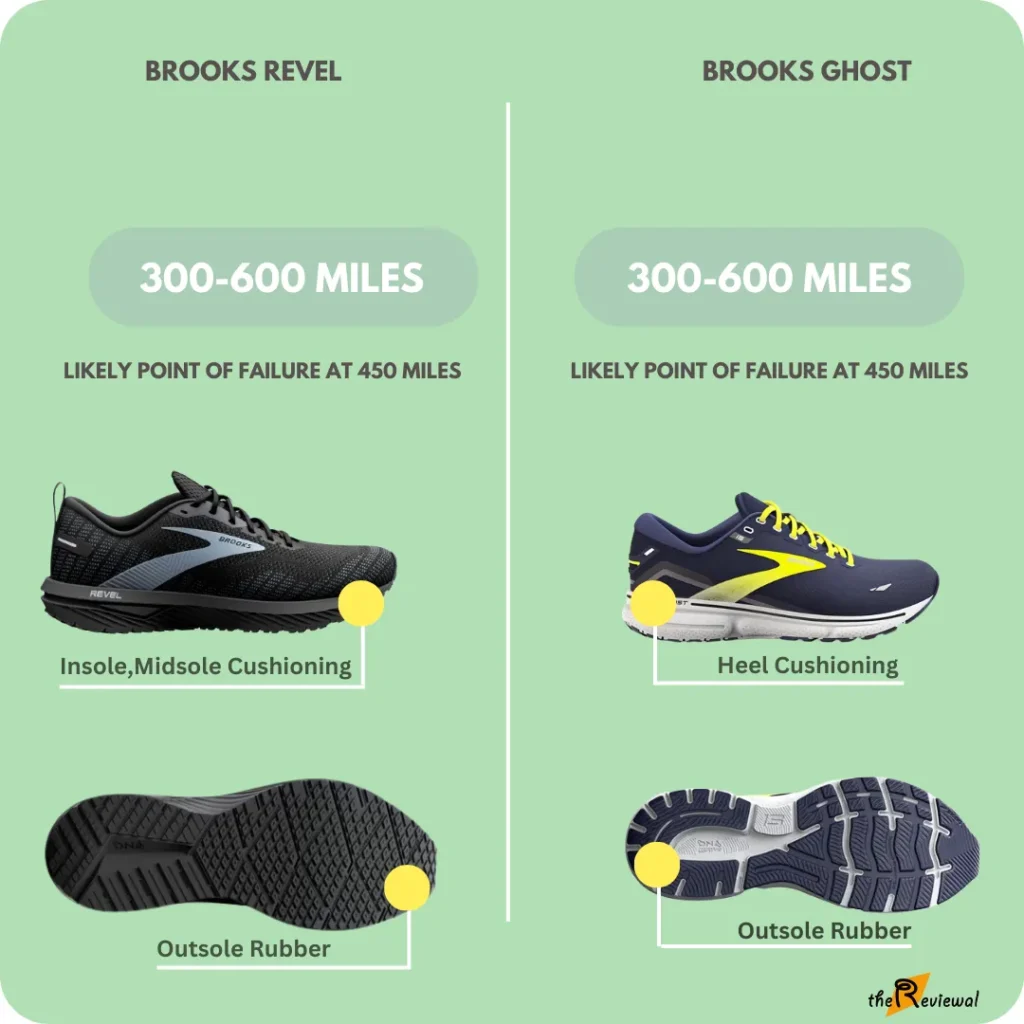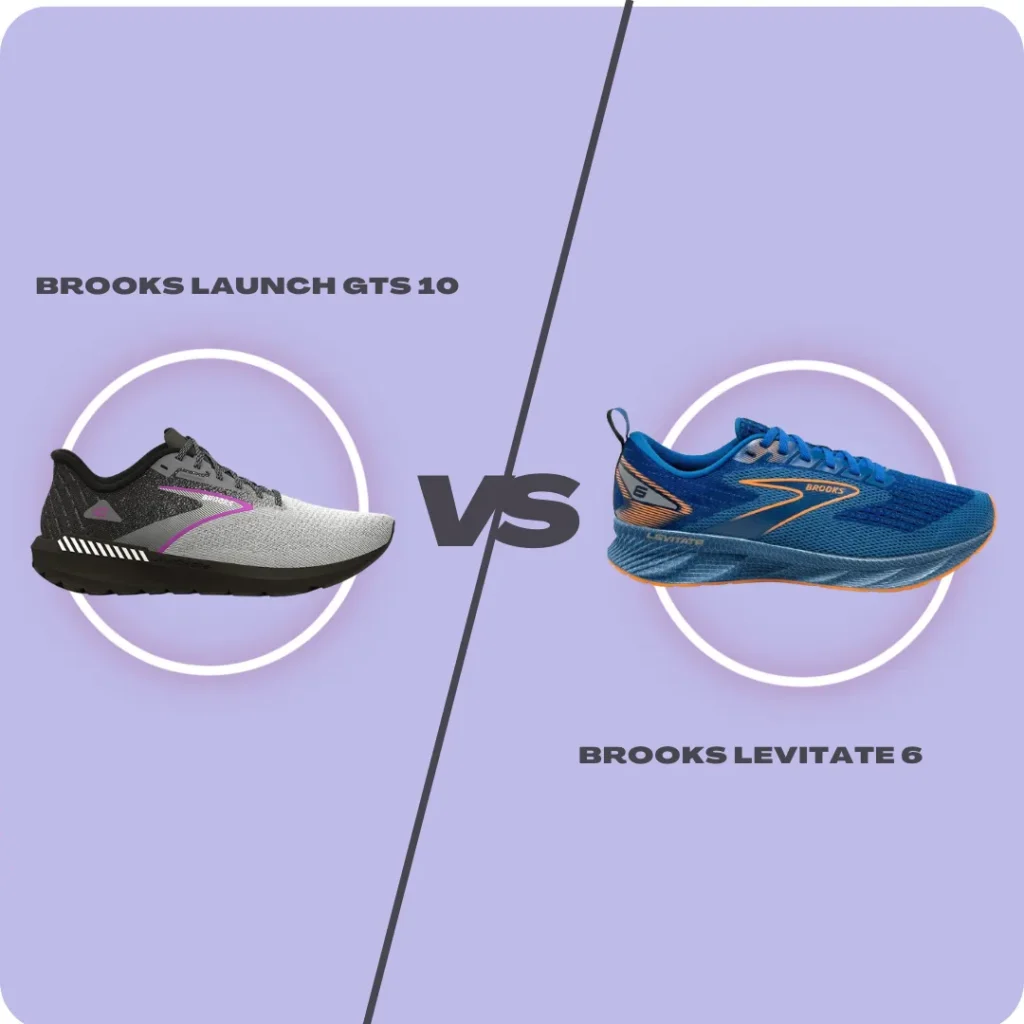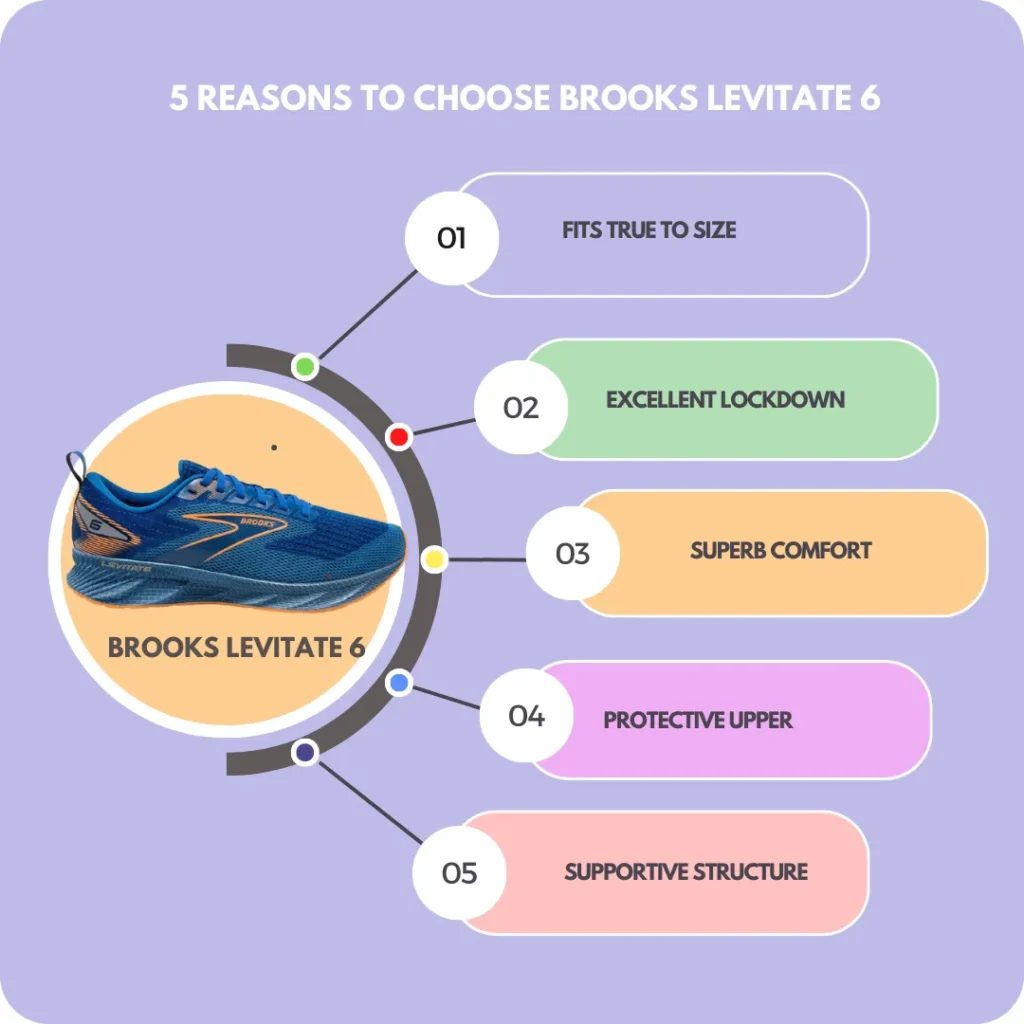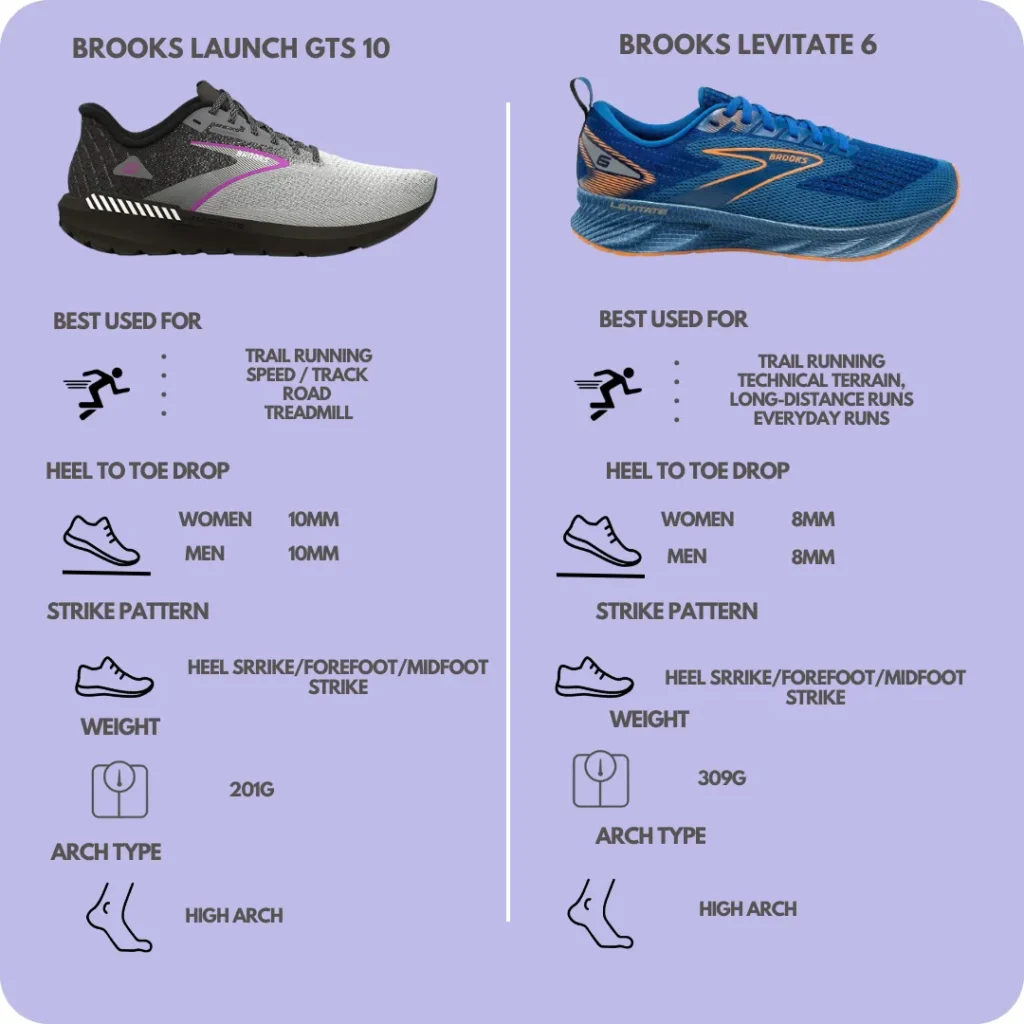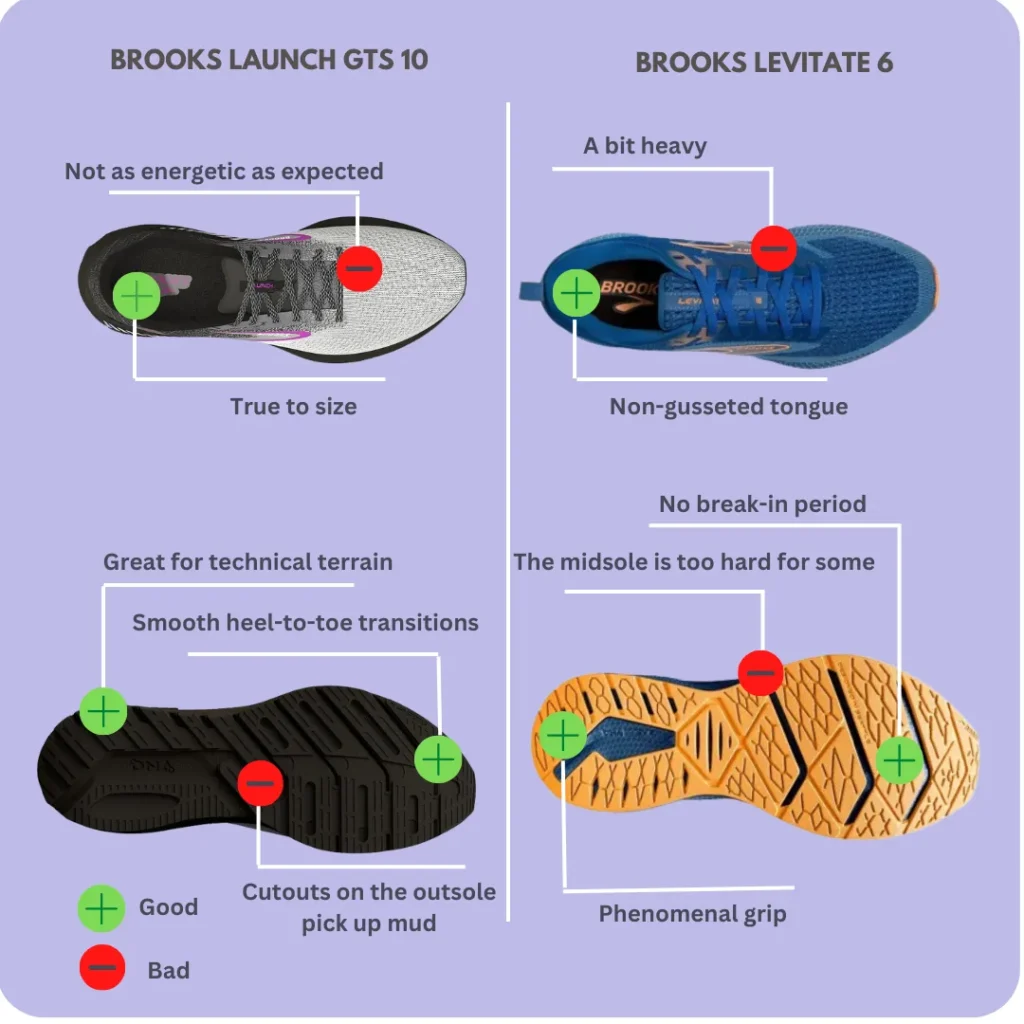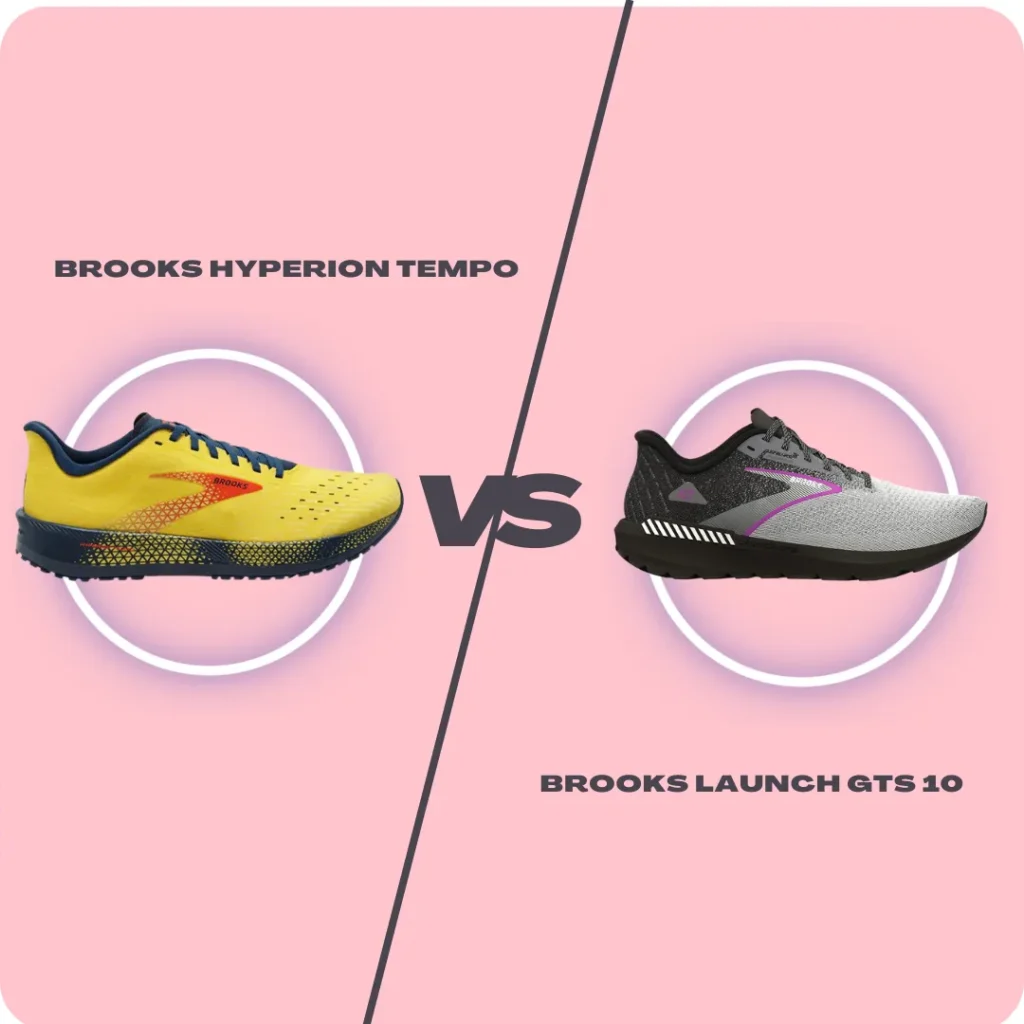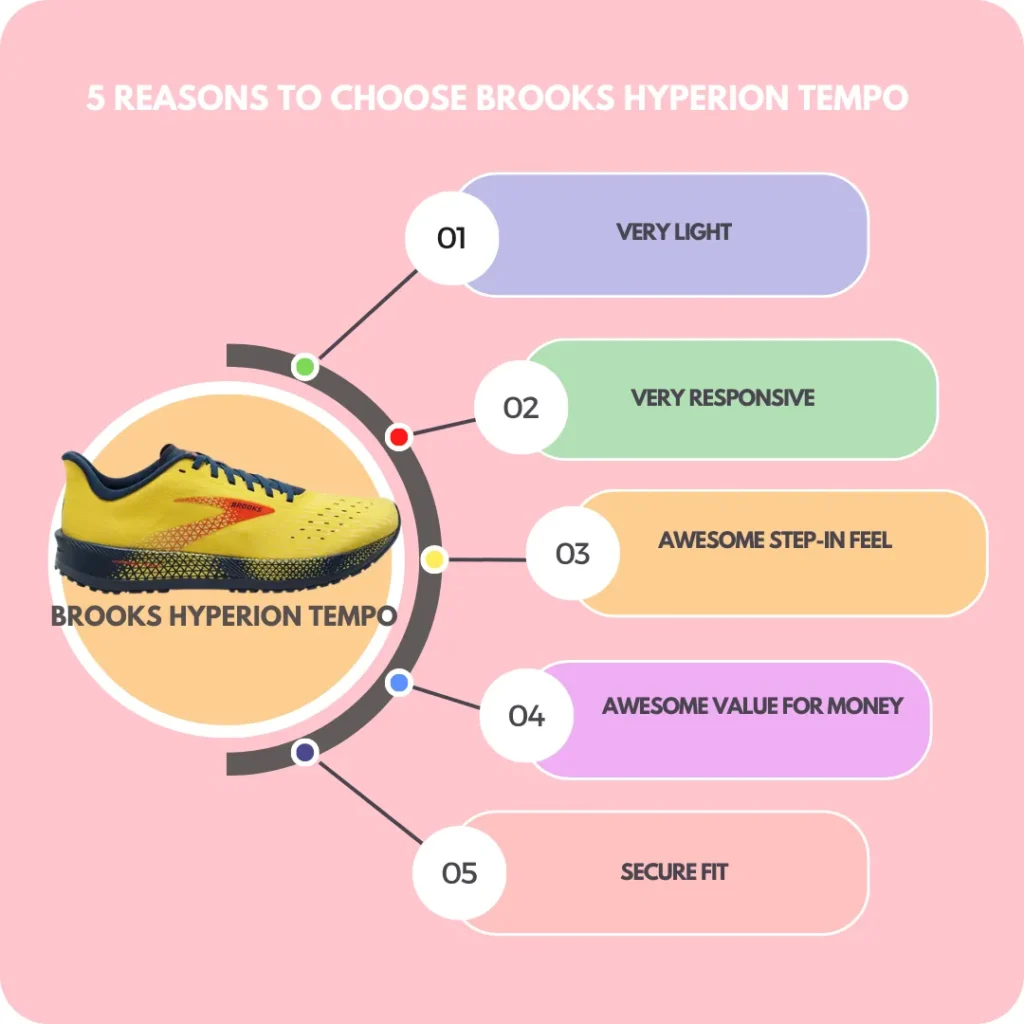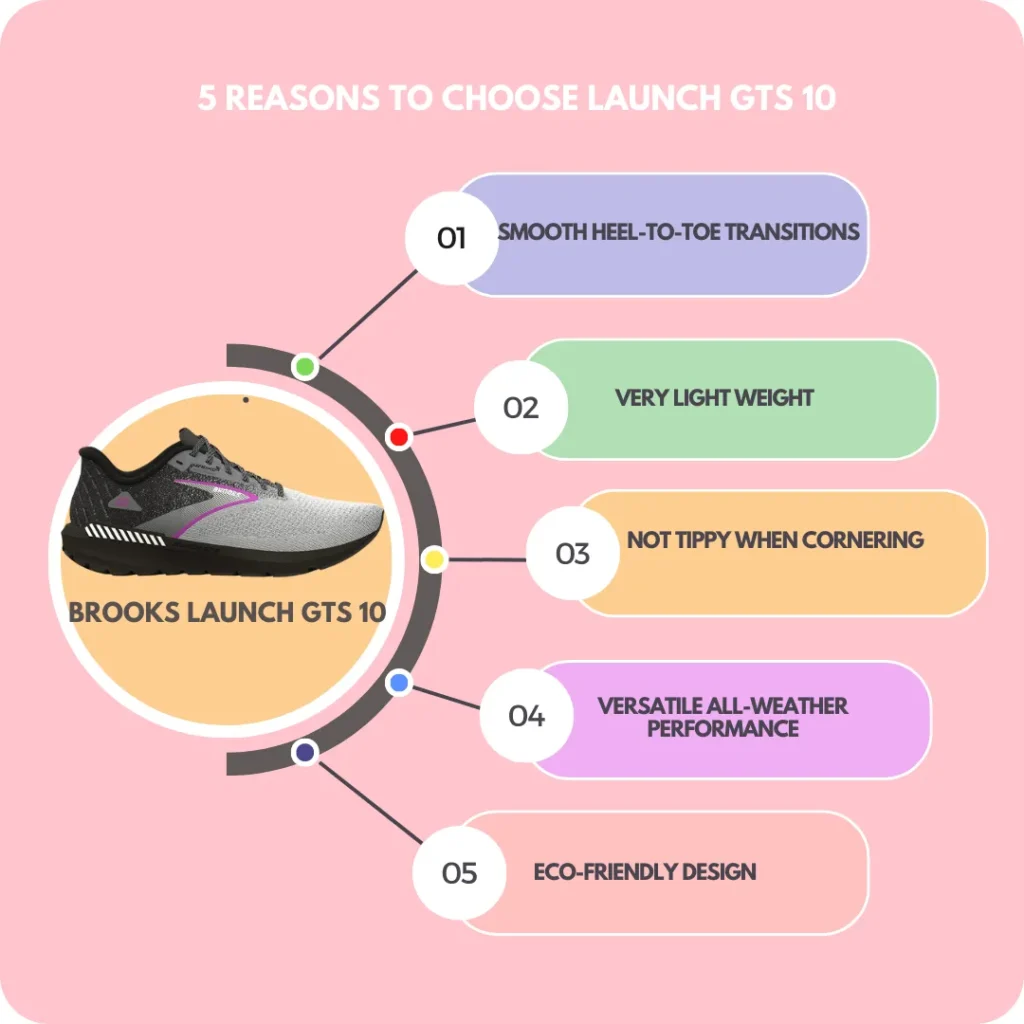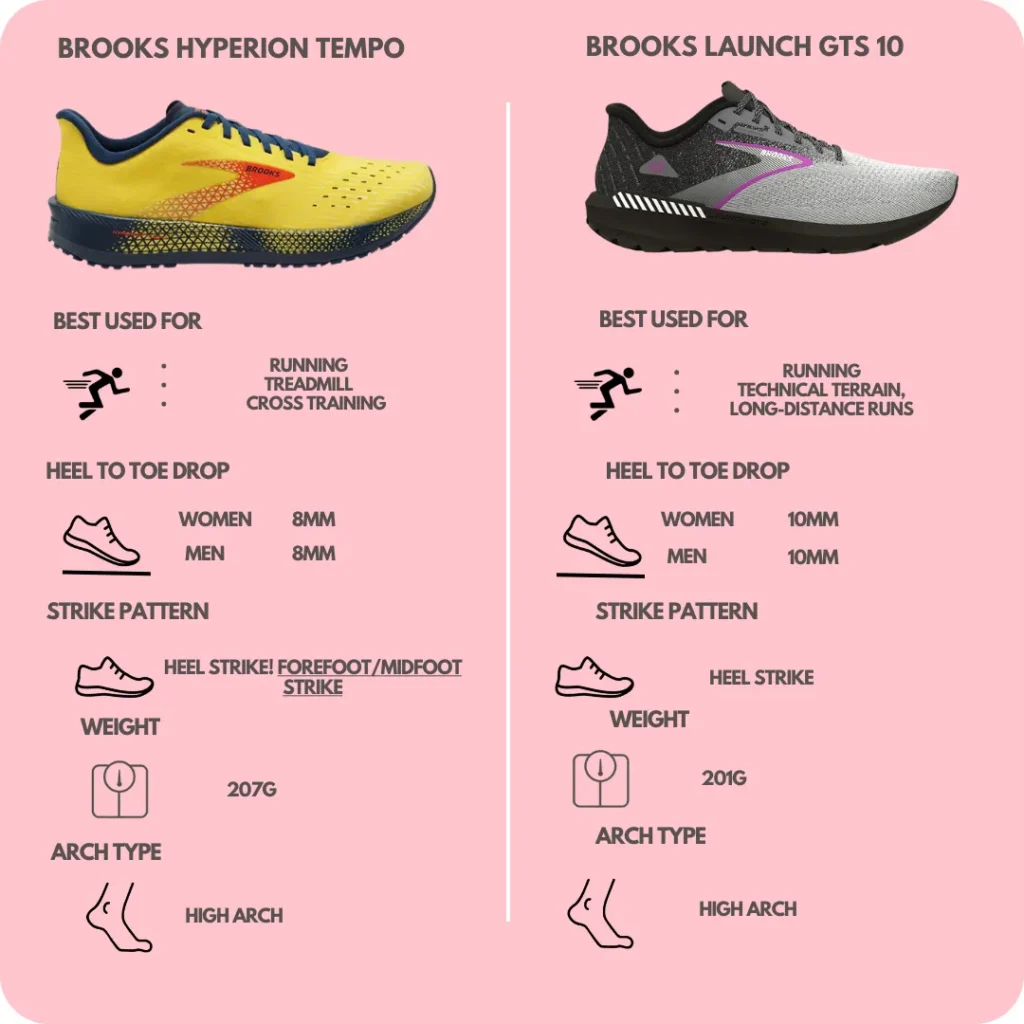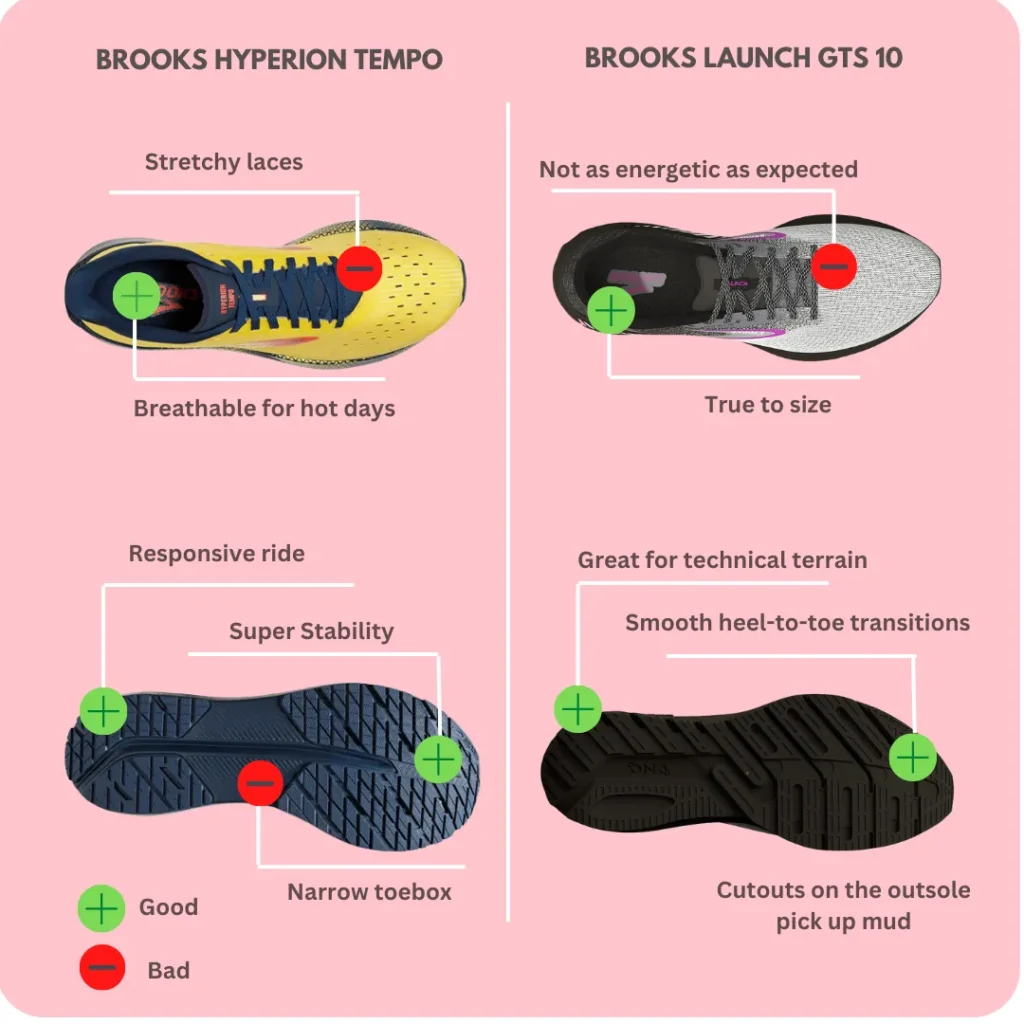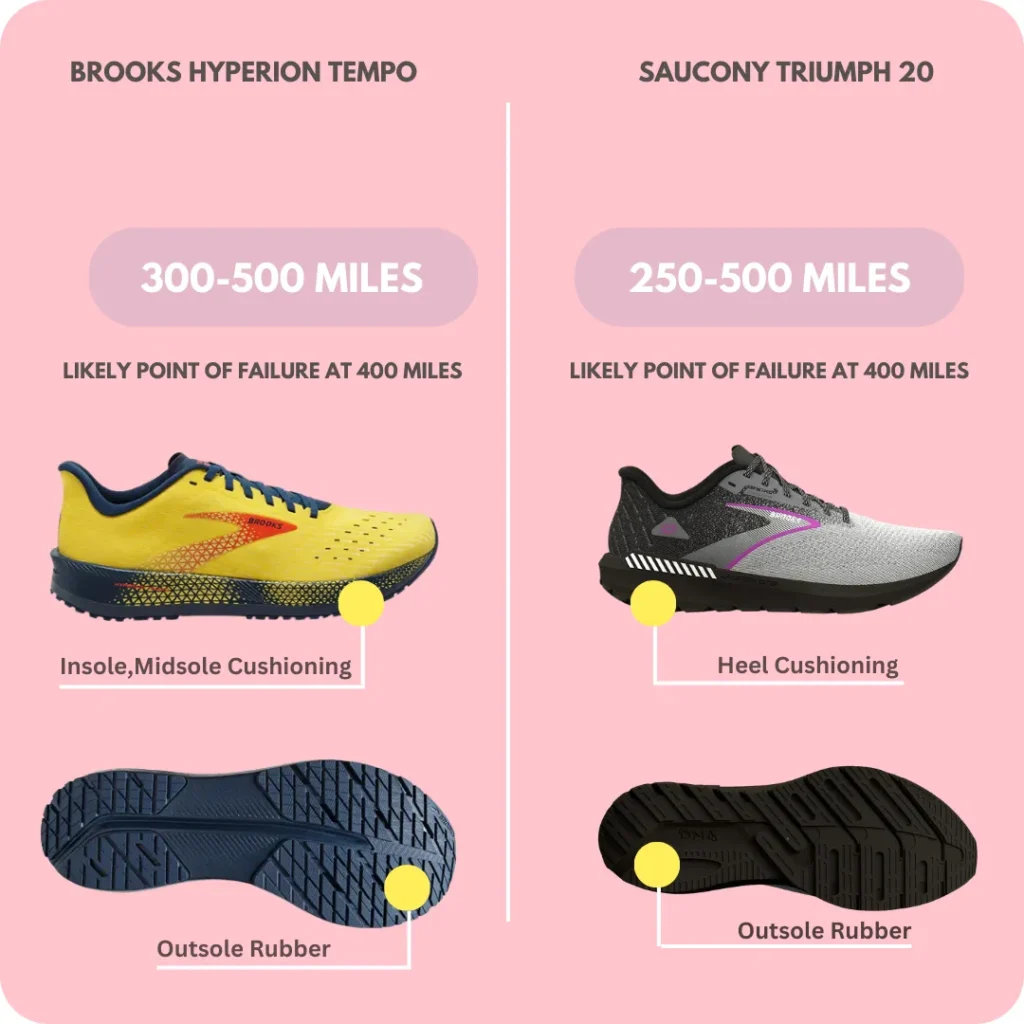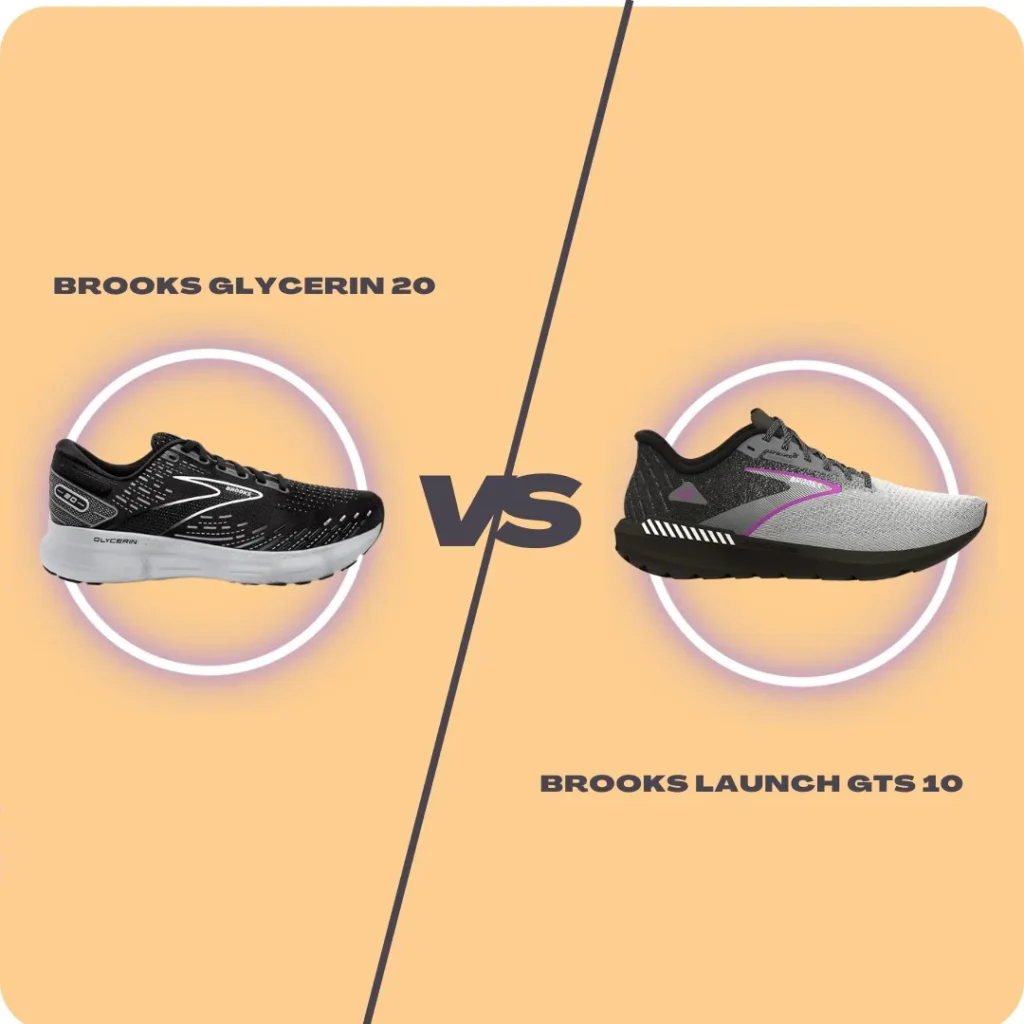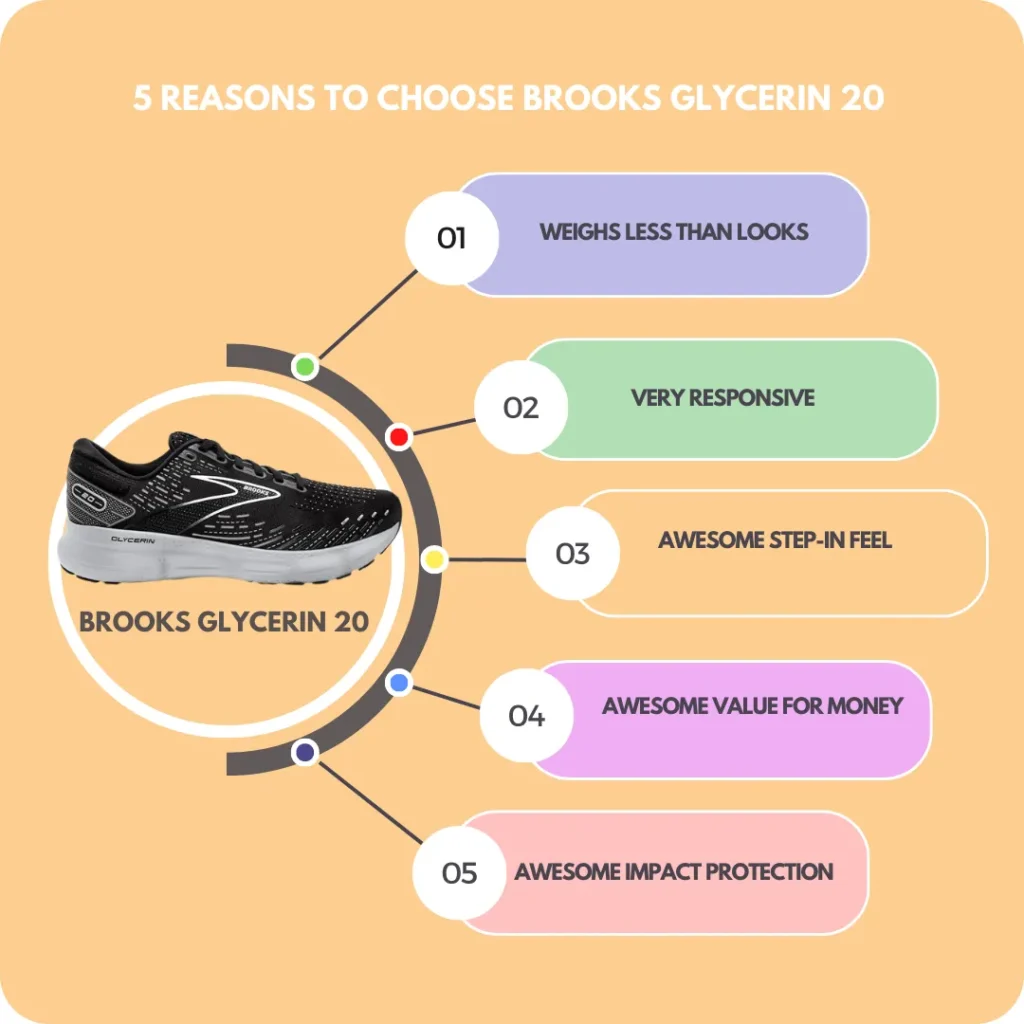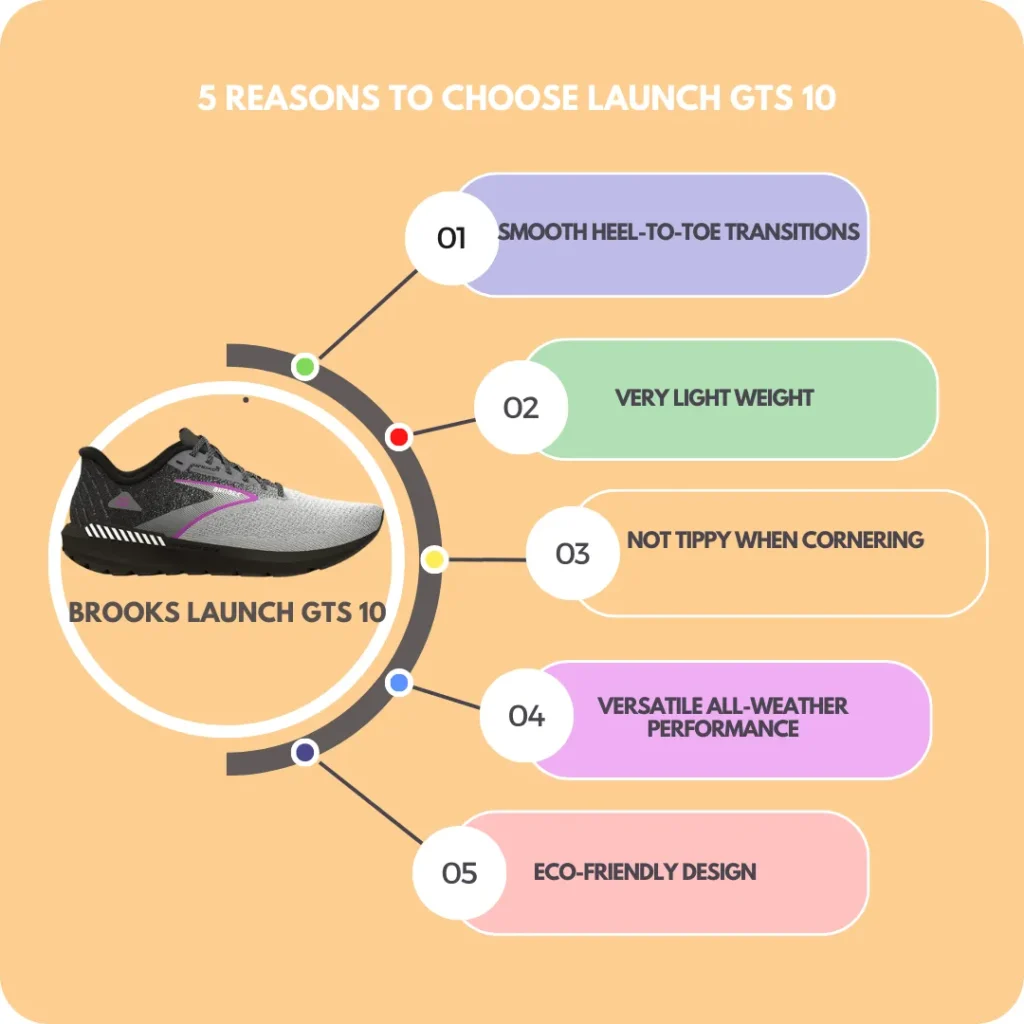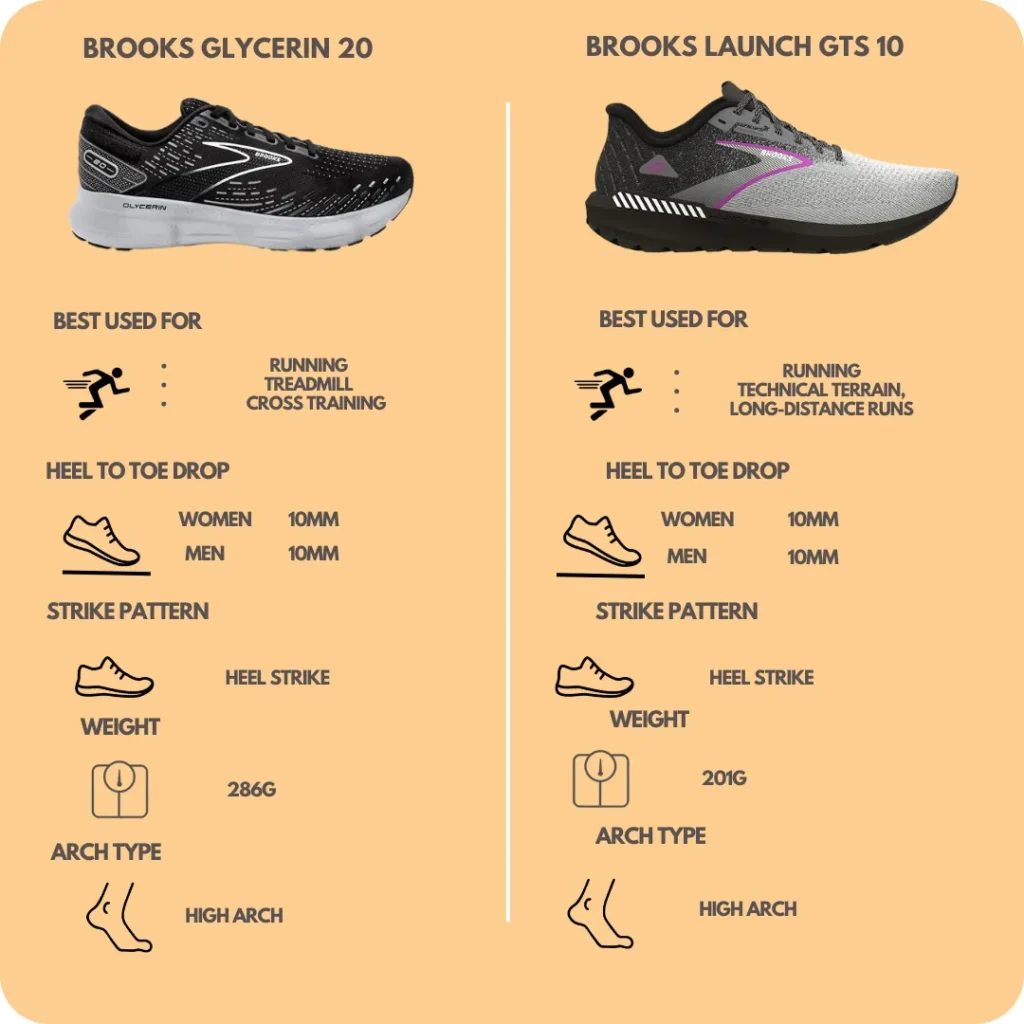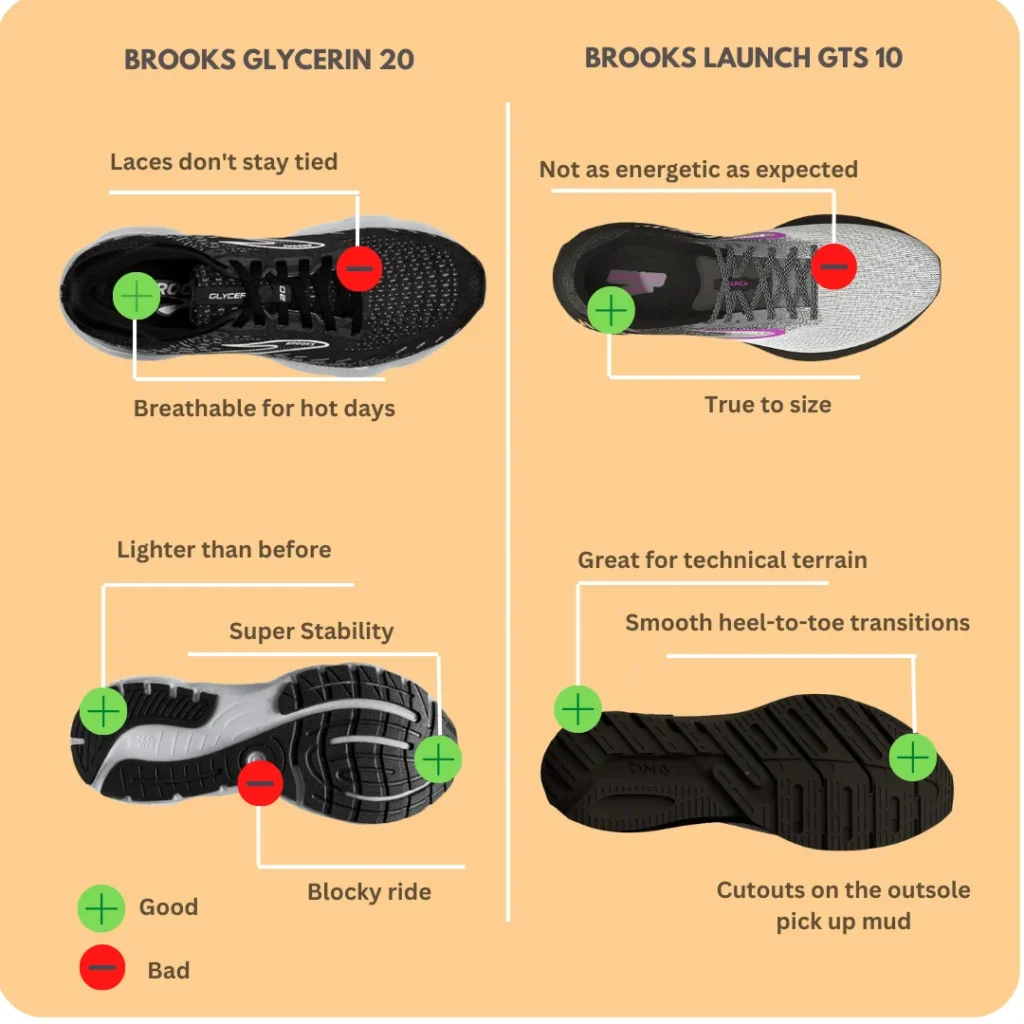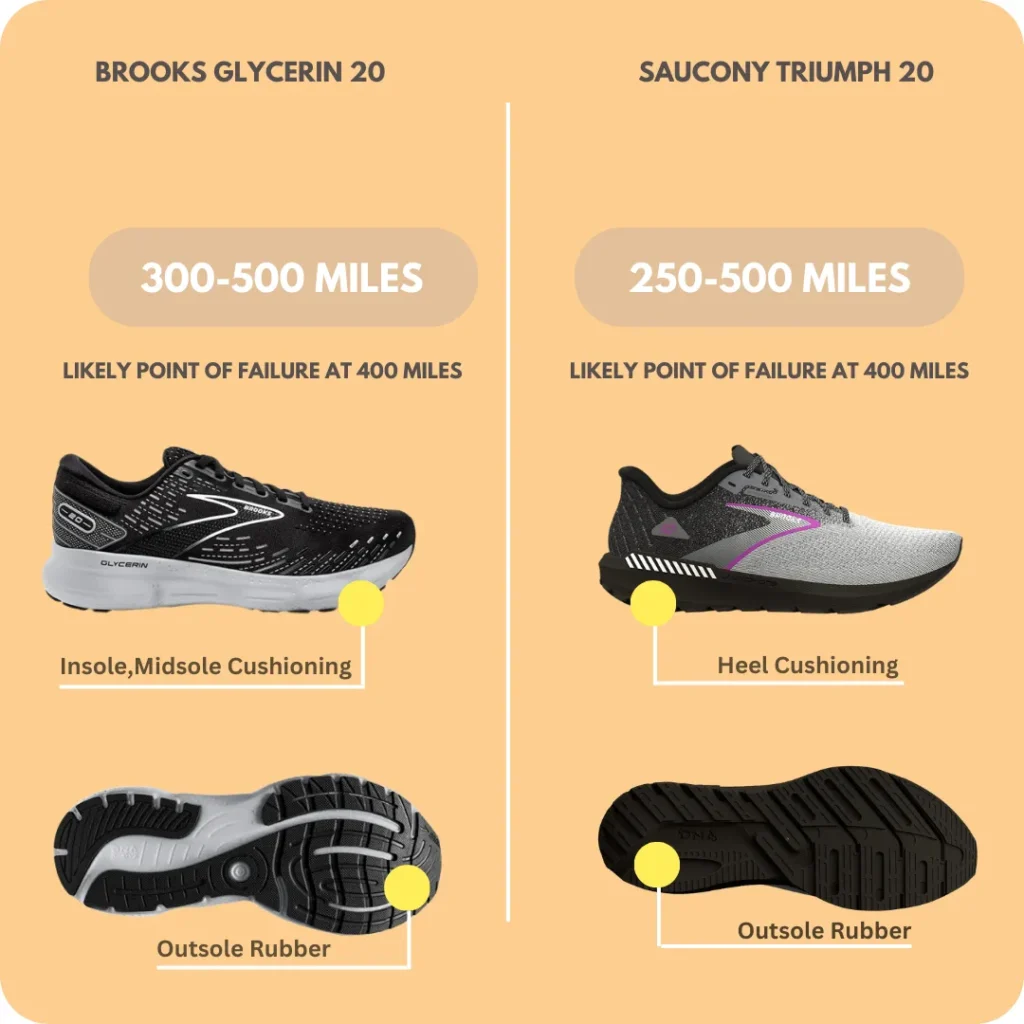Asics GT 2000 11 vs Asics Gel Cumulus 25: Unveiling the Perfect Running Companion
When it comes to choosing the right pair of running shoes, there’s no shortage of options in the market.
Asics, a brand known for its dedication to creating high-quality athletic footwear, offers two popular models that have caught the attention of runners worldwide – the Asics GT 2000 11 and the Asics Gel Cumulus 25.
Both shoes boast impressive features and cutting-edge technologies, but understanding their differences is crucial to finding your ideal running companion.
In this comprehensive comparison, we’ll delve into the key aspects of each shoe, exploring their design, performance, and intended user to help you make an informed decision.

Technical Comparison Table – Asics GT 2000 11 vs Asics Gel Cumulus 25
Here’s a detailed technical side-by-side comparison table for comparing the Asics GT 2000 11 and the Asics Cumulus 25:
| Features | Asics GT 2000 11 | Asics Cumulus 25 |
| Cushioning | FlyteFoam Propel and FlyteFoam Lyte midsole with GEL technology in the rearfoot and forefoot | FlyteFoam Propel and FlyteFoam midsole with GEL technology in the rearfoot and forefoot |
| Upper Material | Engineered mesh with external heel clutching system | Engineered mesh with 3D print overlays |
| Weight | Approximately 10.1 ounces (men’s) / 8.5 ounces (women’s) | Approximately 9.3 ounces (men’s) / 7.6 ounces (women’s) |
| Stack Height | 21mm (Heel), 11mm (Forefoot) | 23mm (Heel), 13mm (Forefoot) |
| Drop | 10mm | 10mm |
| Fit | Medium to high volume | Medium to high volume |
| Pronation Control | Moderate overpronation | Neutral |
| Outsole | AHAR (Asics High Abrasion Rubber) | AHAR (Asics High Abrasion Rubber) |
| Traction | Reliable on various surfaces | Reliable on various surfaces |
| Toe Box | Roomy toe box | Roomy toe box |
| Arch Support | Stability | Neutral |
| Breathability | Moderate | Moderate |
| Durability | Durable construction for long-lasting performance | Durable construction for long-lasting performance |
| Versatility | Suitable for daily training and overpronators | Suitable for daily training and neutral runners |
| Recommended Use | Road running, daily training, and overpronators | Road running, daily training, and neutral runners |
You May Also Like – Asics Nimbus 25 vs Asics Cumulus 25: An In-Depth Comparison
Design and Structure
The Asics GT 2000 11 and Asics Gel Cumulus 25 may seem similar at first glance, but they cater to different types of runners and preferences.
The GT 2000 11 is designed as a light-stability shoe, making it an excellent choice for runners who require some level of support and pronation control.
Its structured design incorporates Asics’ Trusstic System technology, which enhances stability while maintaining the shoe’s lightweight nature.
Additionally, the GT 2000 11 features a breathable mesh upper with seamless construction, providing a snug yet comfortable fit.
On the other hand, the Asics Gel Cumulus 25 is a neutral running shoe, tailored for runners with a neutral foot strike.
Asics has prioritized comfort in this model, incorporating their FlyteFoam technology for responsive cushioning and a plush underfoot feel.
The Gel Cumulus 25’s upper is crafted with multi-directional stretch mesh, delivering a flexible and accommodating fit.
This shoe is ideal for runners seeking a smooth and comfortable ride without additional stability features.
Read Also – Asics Gel Excite 10 vs Asics GT 2000 11: Which is Best for You?
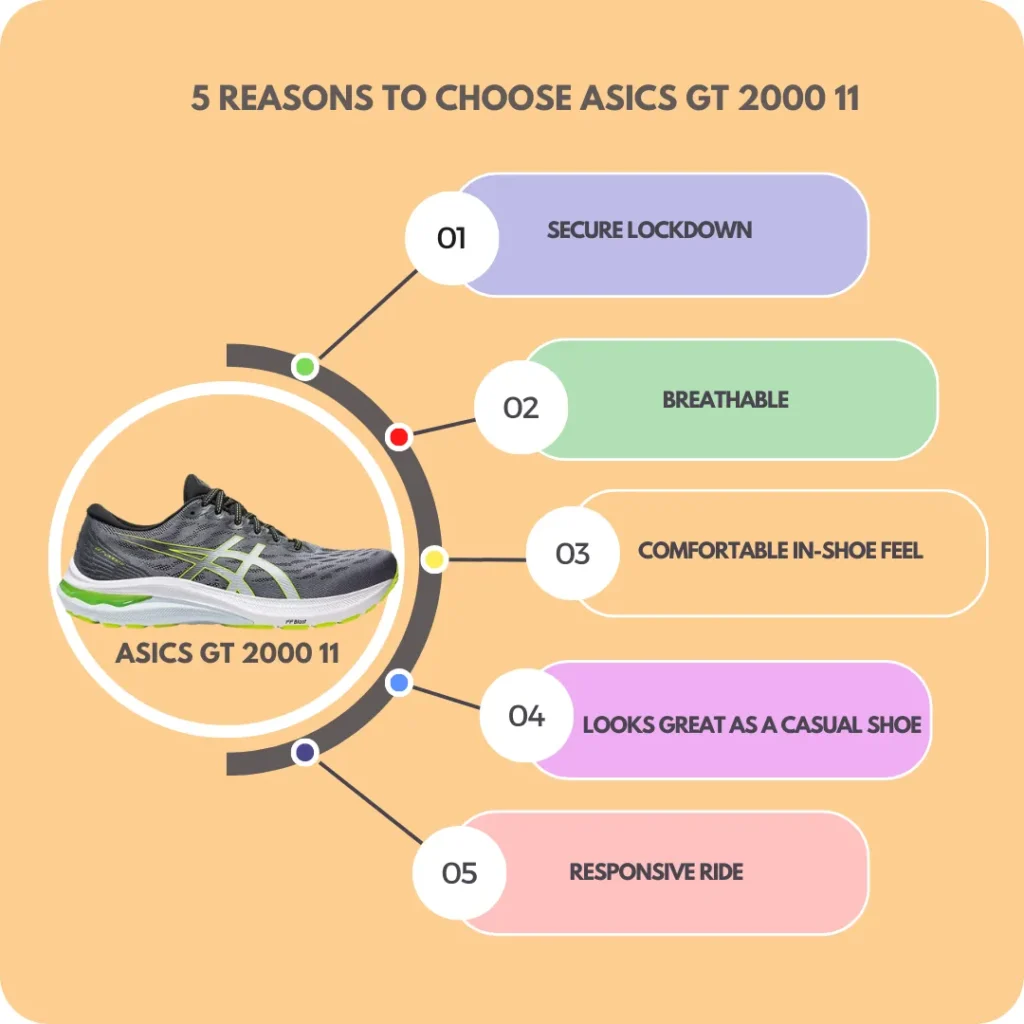
Related Comparison – ASICS GT 1000 12 vs ASICS GT 2000 11 – A Detailed Comparison
Performance and Cushioning
Performance is a critical factor when choosing running shoes, and both the GT 2000 11 and Gel Cumulus 25 deliver impressive results in their respective categories.
The GT 2000 11’s light-stability design promotes a balanced and controlled ride, perfect for runners who tend to overpronate.
The shoe’s FlyteFoam midsole and rearfoot Gel cushioning provide responsive and supportive cushioning during each stride.
This combination ensures a smooth transition from heel to toe and reduces the risk of overpronation-related injuries.
Conversely, the Gel Cumulus 25 shines in the realm of cushioning, offering a plush and luxurious feel underfoot.
Asics’ FlyteFoam Propel and FlyteFoam Lyte technologies provide excellent shock absorption, making the Gel Cumulus 25 ideal for runners seeking superior comfort during their runs.
The rearfoot and forefoot Gel cushioning add an extra layer of protection, absorbing impact and reducing stress on joints.
Also Read – Asics Kayano 30 vs Asics GT 2000 11: Which is Best for You?
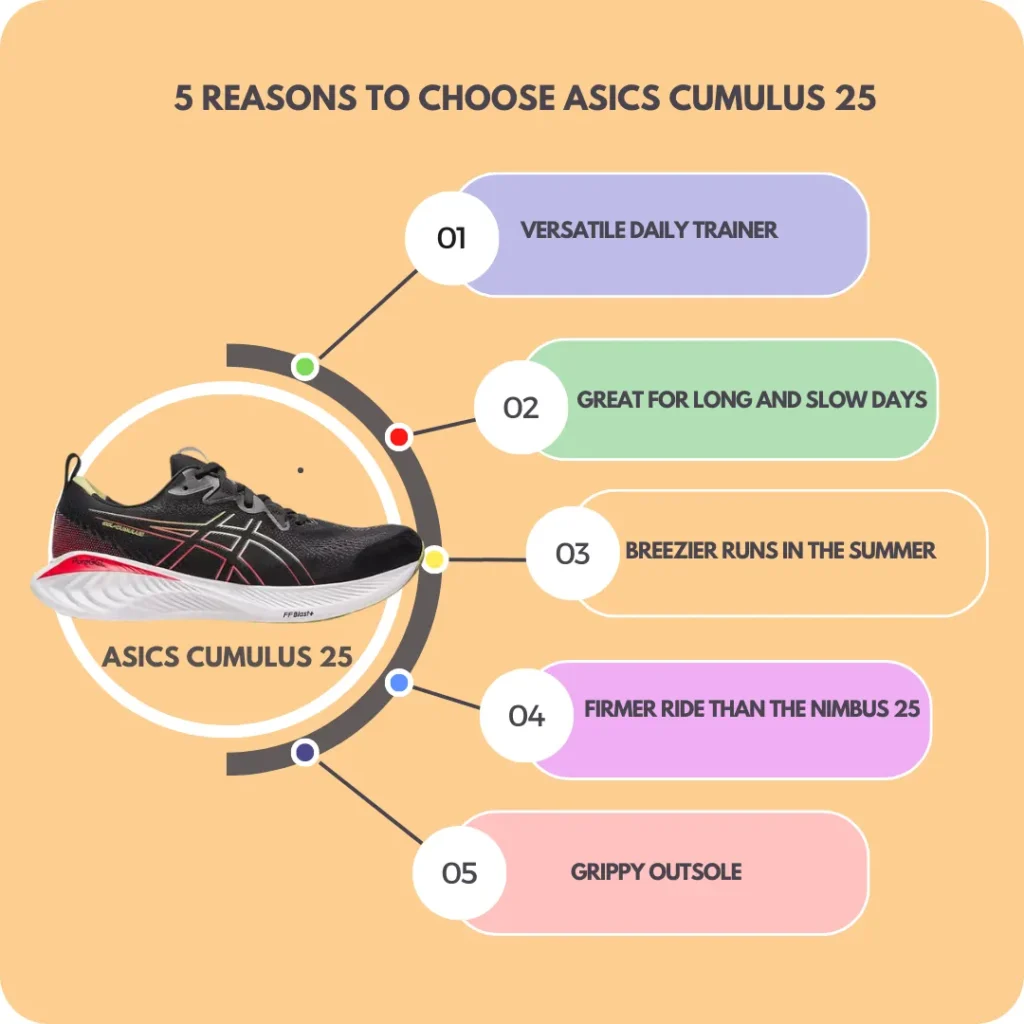
Fit and Comfort
A comfortable fit is crucial for enjoyable runs, and both the GT 2000 11 and Gel Cumulus 25 excel in this aspect.
The GT 2000 11’s seamless mesh upper reduces friction and potential irritation, ensuring a smooth and blister-free running experience.
The shoe’s updated last design accommodates various foot shapes, enhancing overall comfort.
Similarly, the Gel Cumulus 25’s multi-directional stretch mesh upper embraces the foot snugly, providing a flexible and adaptable fit.
Its 3D-printed overlays offer targeted support without compromising on comfort.
The cushioned collar and tongue add to the shoe’s overall plushness, making each step feel like you’re floating on clouds.
Related Comparison Article – Asics Kayano 30 vs Asics Venture 9: Decoding the Perfect Running Companion
Durability and Traction
Durability is a crucial factor, especially for runners who log significant miles.
Both the GT 2000 11 and Gel Cumulus 25 are crafted with high-quality materials to ensure long-lasting performance.
The GT 2000 11’s AHAR (Asics High Abrasion Rubber) outsole is strategically placed in high-wear areas, extending the shoe’s lifespan while providing reliable traction on various surfaces.
The outsole’s guidance line technology aids in a smooth and efficient gait cycle, promoting a natural and comfortable running experience.
Similarly, the Gel Cumulus 25 incorporates AHAR technology in its outsole, delivering robust traction and enduring performance.
The shoe’s full-ground contact design enhances stability and ensures a confident grip on different terrains.
Both models are equipped to handle the wear and tear of daily running, offering durability that withstands the test of time.
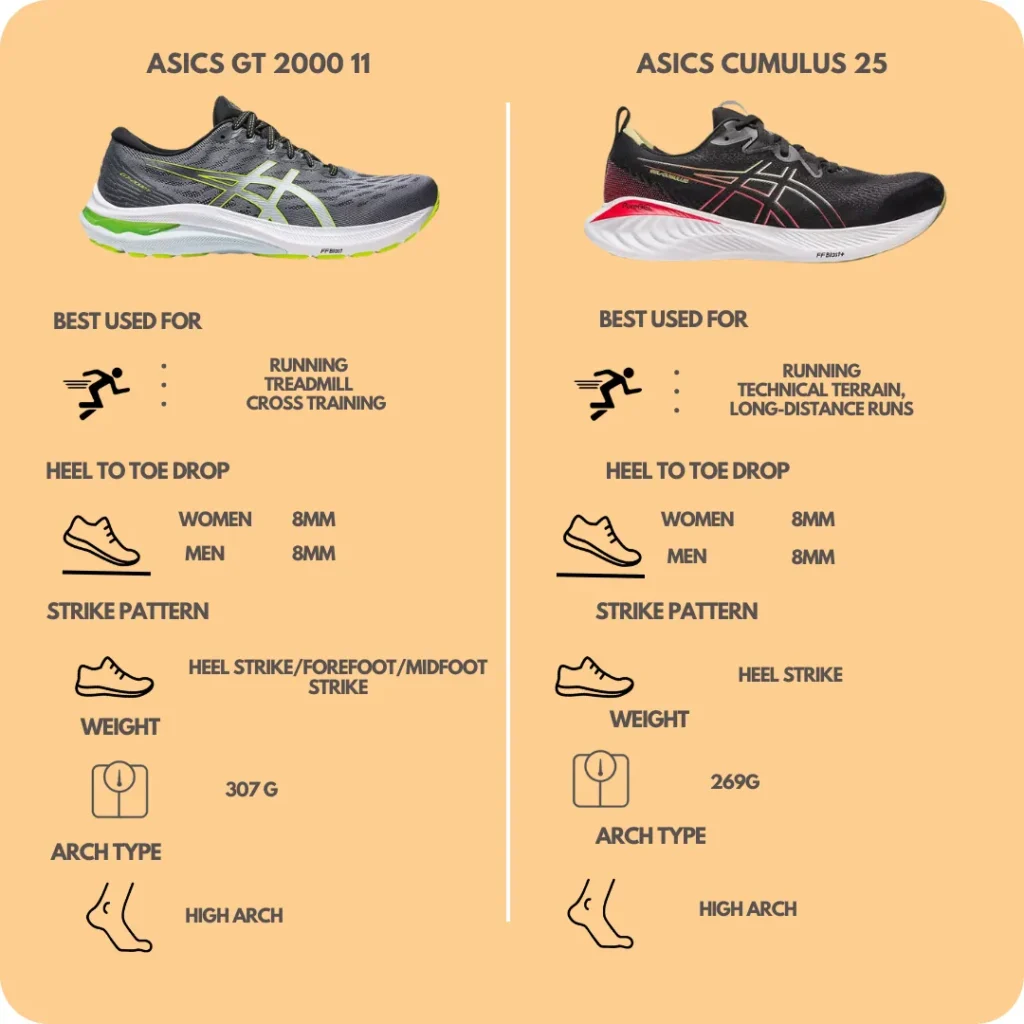
Read Also – Asics GT 2000 11 vs Asics Gel Nimbus 25: Unraveling the Best Running Companion
My Personal Experience with Asics GT 2000 11 and Cumulus 25
As an avid runner myself, I’ve had the pleasure of putting both these models to the test, and let me tell you, they’ve been nothing short of fantastic companions on my running journey.
Starting with the Asics GT 2000 11, I must say it’s been a game-changer for me as a mild overpronator.
The stability and support it provides are just what my feet need to stay comfortable and injury-free during long runs.
The FlyteFoam midsole and Gel cushioning offer a responsive and energetic feel underfoot, giving me that extra boost of confidence with each stride.
Plus, the breathable mesh upper keeps my feet cool and blister-free, which is always a bonus on hot summer runs.
All in all, the GT 2000 11 has become my go-to shoe for training sessions and races alike.
On the other hand, the Asics Gel Cumulus 25 has earned a special place in my heart as well.
As a neutral runner, I crave maximum cushioning and comfort, and the Cumulus 25 delivers that in spades.
The FlyteFoam technology offers a plush and luxurious feel underfoot, making each step feel like I’m floating on clouds.
The shoe’s fit is spot-on, with the multi-directional stretch mesh upper hugging my feet perfectly without any irritation.
Whether it’s a leisurely jog or a recovery run, the Cumulus 25 is my trusted companion for those easy-going days when I want to enjoy the sheer pleasure of running without worrying about anything else.
Also Read – Asics Gel Excite 10 vs Asics Gel Pulse 14: Which is Best for You?
So, if I had to pick a favorite between the two, I’d say it’s a tough choice, but the Gel Cumulus 25 holds a special place in my heart for its unmatched comfort and cushioning.
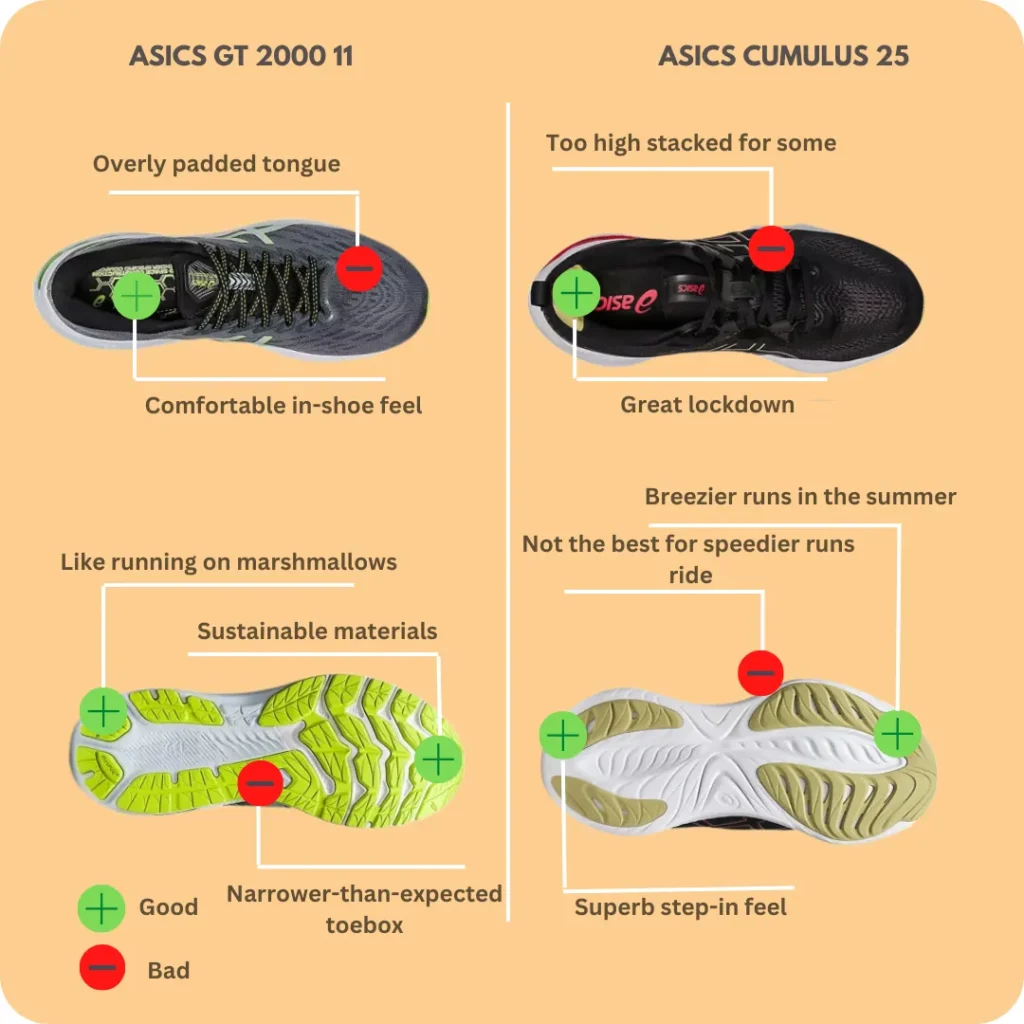
Related Post – Asics GT 2000 11 vs Asics Gel Venture 9: A Comprehensive Comparison
Conclusion
In conclusion, the Asics GT 2000 11 and Asics Gel Cumulus 25 are outstanding running shoes, each catering to specific running styles and preferences.
If you need stability support and pronation control, the GT 2000 11 is an excellent choice, providing a balanced and controlled ride.
On the other hand, the Gel Cumulus 25 is a top-notch neutral shoe, delivering maximum cushioning and unmatched comfort for neutral runners.

Related Comparison – Asics Novablast 3 or Cumulus 25 Running Shoes: Which is Best for You?
FAQs
What are the main differences between Asics GT 2000 11 and Cumulus 25?
- The Asics GT 2000 11 is a light-stability shoe designed for mild to moderate overpronators, offering support and control during the running gait.
- Asics Cumulus 25, on the other hand, is a neutral running shoe, perfect for runners with a neutral foot strike, providing a plush and comfortable ride without stability features.
Which shoe is suitable for overpronators – GT 2000 11 or Cumulus 25?
If you tend to overpronate and need support during your runs, the Asics GT 2000 11 would be the better choice. Its stability features, such as the Dynamic DuoMax support system, help correct overpronation and promote a smoother gait.
The Asics Cumulus 25 is ideal for neutral runners who do not require additional stability features and prefer maximum cushioning for a luxurious feel underfoot.
How do the cushioning systems differ in GT 2000 11 and Cumulus 25?
The GT 2000 11 incorporates FlyteFoam technology and rearfoot Gel cushioning for responsive and supportive cushioning during each stride.
Asics Cumulus 25, on the other hand, focuses on providing exceptional cushioning through its FlyteFoam Propel and FlyteFoam Lyte technologies, delivering a plush and comfortable ride.
Which shoe offers better breathability and fit – GT 2000 11 or Cumulus 25?
Both shoes offer excellent breathability, but their fit may differ slightly. The GT 2000 11 features a breathable mesh upper with a seamless construction, providing a snug yet comfortable fit.
The Asics Cumulus 25 utilizes multi-directional stretch mesh in its upper, offering a more flexible and accommodating fit.
Are the GT 2000 11 and Cumulus 25 suitable for long-distance running?
Yes, both the GT 2000 11 and Cumulus 25 are suitable for long-distance running. The GT 2000 11’s stability features provide the necessary support and comfort for extended runs.
The Gel Cumulus 25’s maximum cushioning is designed to keep neutral runners’ feet comfortable and protected during long distances.
Asics GT 2000 11 vs Asics Gel Cumulus 25: Unveiling the Perfect Running Companion Read More »
